For the first three nights of our honeymoon, we were based at the Hilton Garden Inn Singapore Serangoon, based in an area known as Little India in Singapore. We paid a little bit more to have a garden view room; it was large, bright, modern and airy with a window seat so that you could get a good glimpse of the skyline. Plus you could see the daily cricket match that went on in the park below.

The hotel was popular with families, rather than business travellers which you might expect in some Hilton Garden Inn hotels. The rooftop pool was ideal for a dip after a long day trekking about and right next to the breakfast room, which had a good selection – continental, Chinese, cooked breakfasts and waffles.
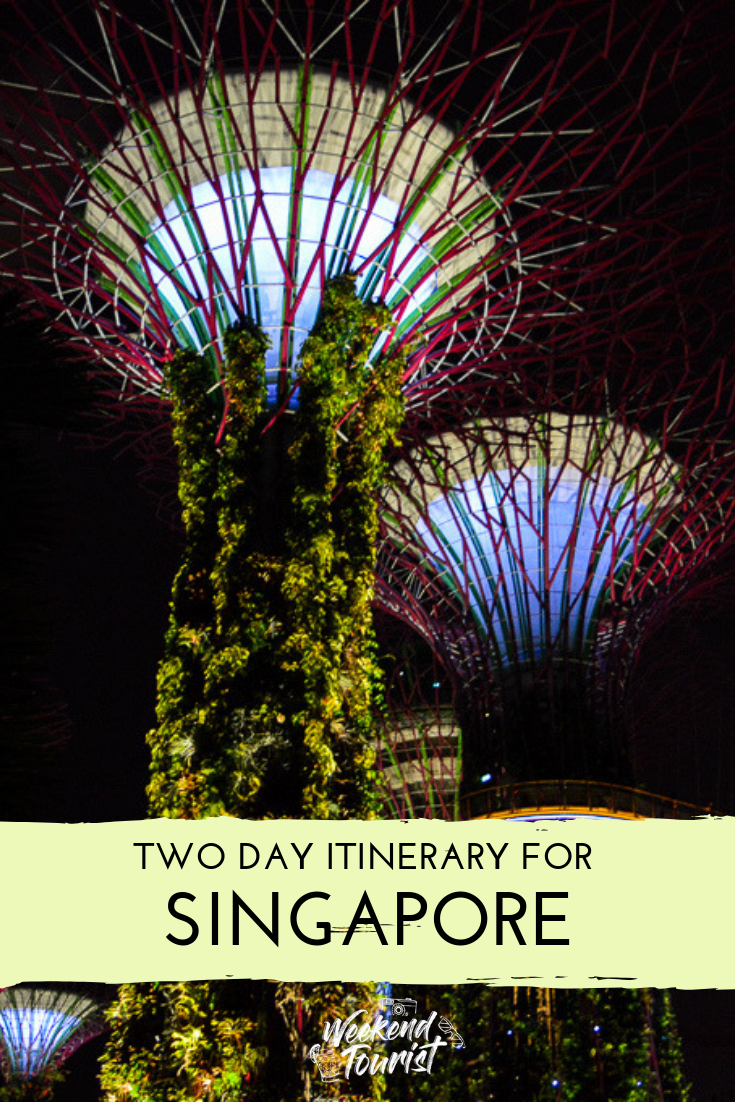
Kaya paste – the ultimate toast spread
It was here that I discovered my new favourite toast spread. Move over Nutella, say ciao marmalade, kaya paste is in the house.
We almost missed our connecting flight on the way home due to kaya paste – we both decided that carry several jars of kaya paste around Bali for two weeks was deeply impractical, so we’d buy some in Singapore airport on the way home.
In the end, our flight leaving Bali was delayed and we only had thirty minutes to get from our gate to our connection. Whilst Tom was checking the boards for our flight details, I dived into the duty-free to pick up four jars of the stuff.
I was at the checkout when they called final boarding on our plane and I’ve never seen Tom run so fast in his life – like that scene at the beginning of Home Alone before they realise they’ve left Kevin behind.
What is kaya paste? The jar info says… ‘Kaya means ‘rich’ in the Malay language based on its golden colour and exquisite taste. It is a local jam made from eggs, coconut milk, flavoured by pandan leaves and sweetened with sugar. A true Singapore flavour well-loved by all. It is perfect with plain or buttered toast for breakfast or tea time.’
Singapore’s botanical gardens
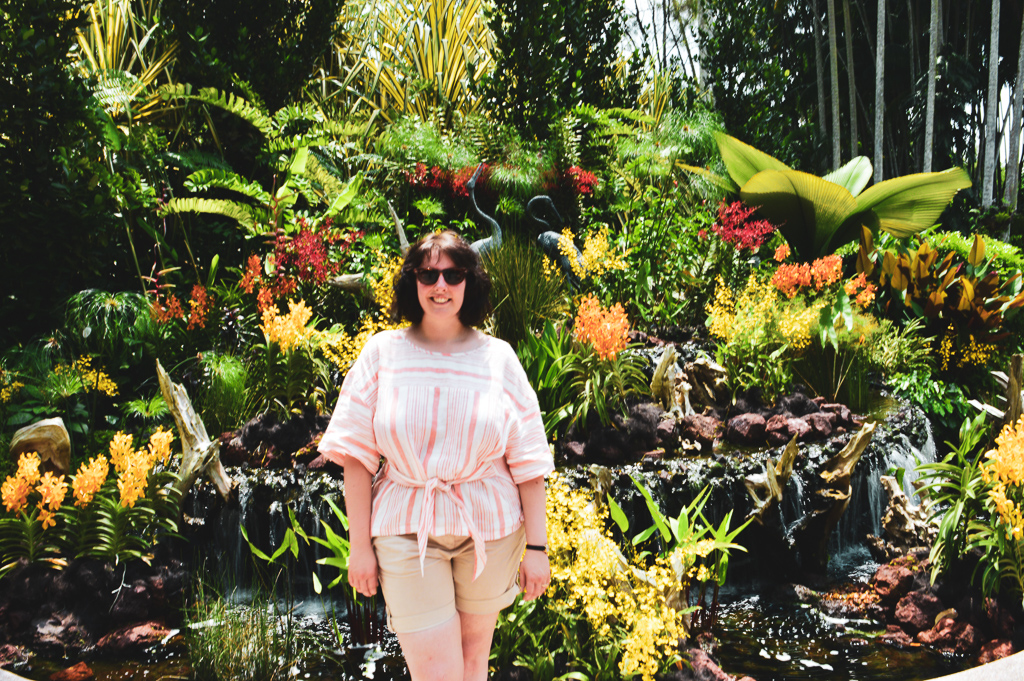
Our first port of call on our trip was to the Singapore Botanic Gardens, a 158-year-old tropical garden at the top of the famous Orchard Road – it’s the only tropical garden to be designated a UNESCO World Heritage Site. It was founded in 1859 and played a vital role in the region’s rubber trade boom when the first scientific director, Henry Nicholas Ridely, experimented with its cultivation.
The Botanic Gardens span 82 hectares and Tom and I quickly realised we weren’t going to be covering the whole site on this visit. We wound our way through the foliage garden before heading to the national orchid collection.
In April, the gardens also host the Orchid Festival (one of many I reckon). Agricultural and horticultural clubs from across Singapore and further afield build large exhibits showcasing every variety of orchid – ballerinas with tumbling floral skirts or a colourful cowboy. The overriding rule – the gaudier the better!
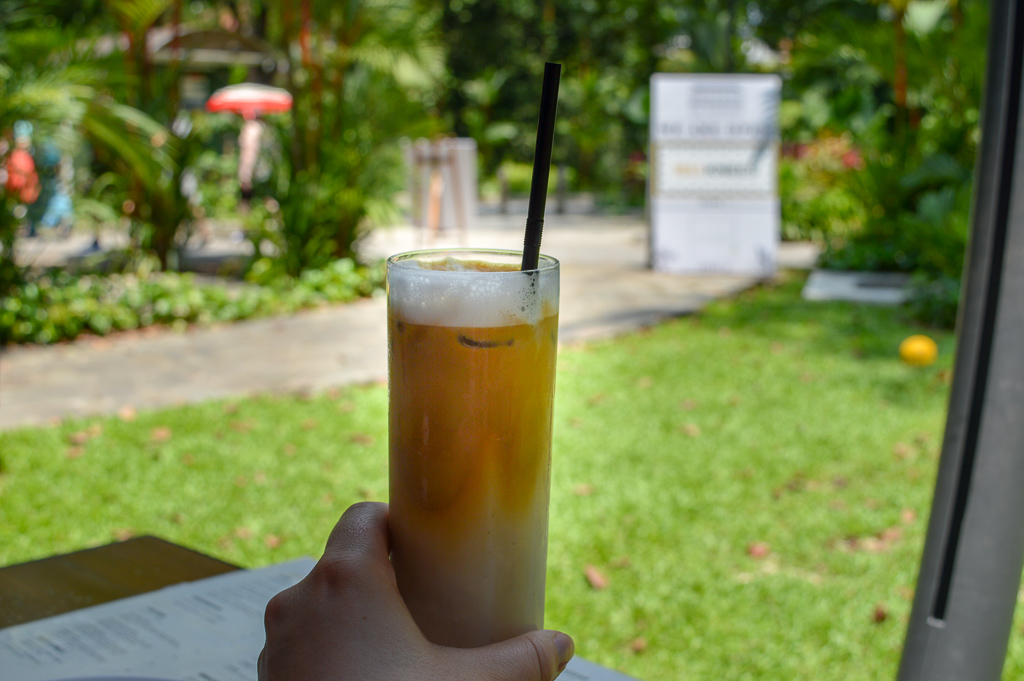
This was also our first experience of the selfie hoards – every tourist wielding a selfie stick taking their picture alongside every orchid. I can’t even begin to describe the throngs of sticks… at the end of this Tom was definitely experiencing orchid overload.
Tekka Centre
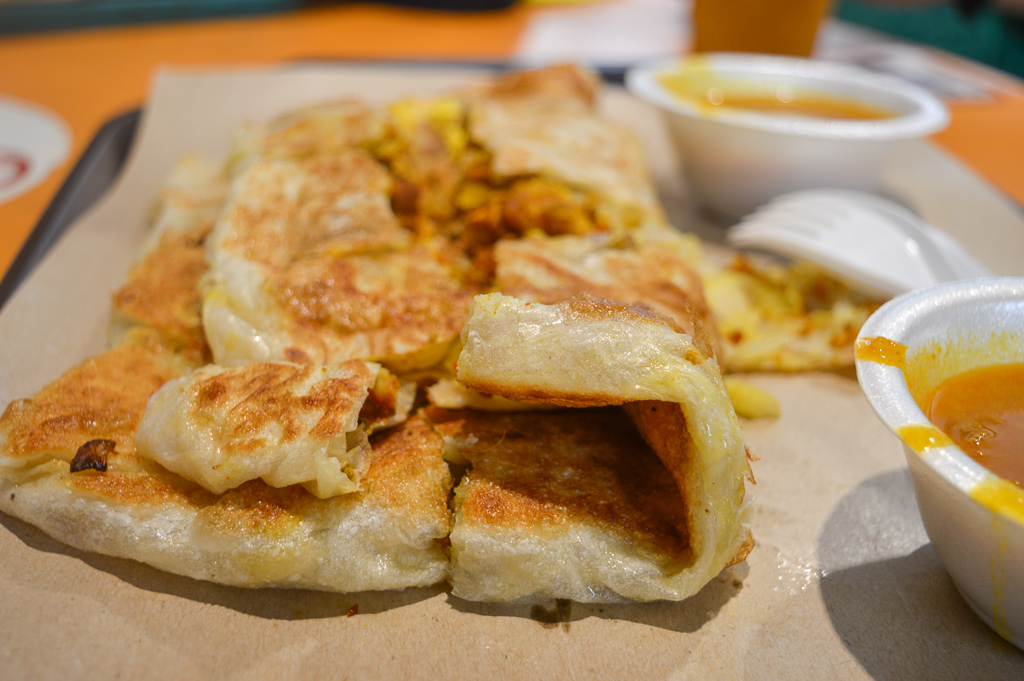
Following our walk around the Botanic Gardens, we headed back to the hotel for a dip in the pool. Yet first, we stopped at the Tekka Centre, a street food hawker spot. Oddly, we struggled to find the entrance and walked around the block at least twice, but really you can’t miss it – there’s a massive sign overhead reading ‘Tekka Centre’. Inside there’s plenty of choice, but Lonely Planet suggested seeking out Ah-Rahman Royal Prata which ‘flips Singapore’s finest murtabarak,’ which is like a filled pancake. And they are not wrong!
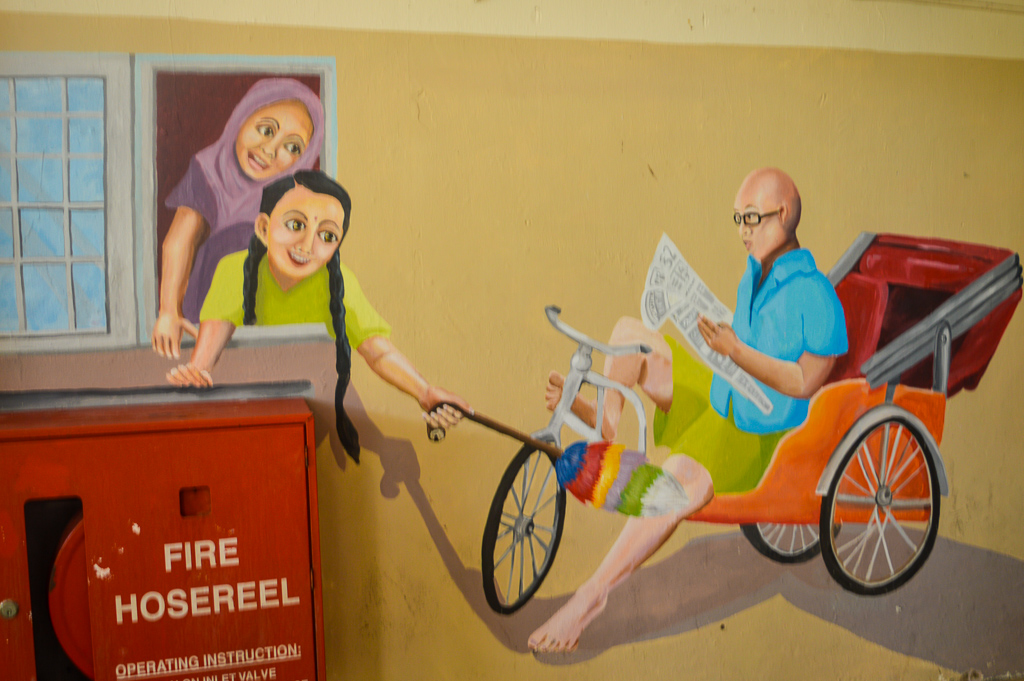
Chinatown
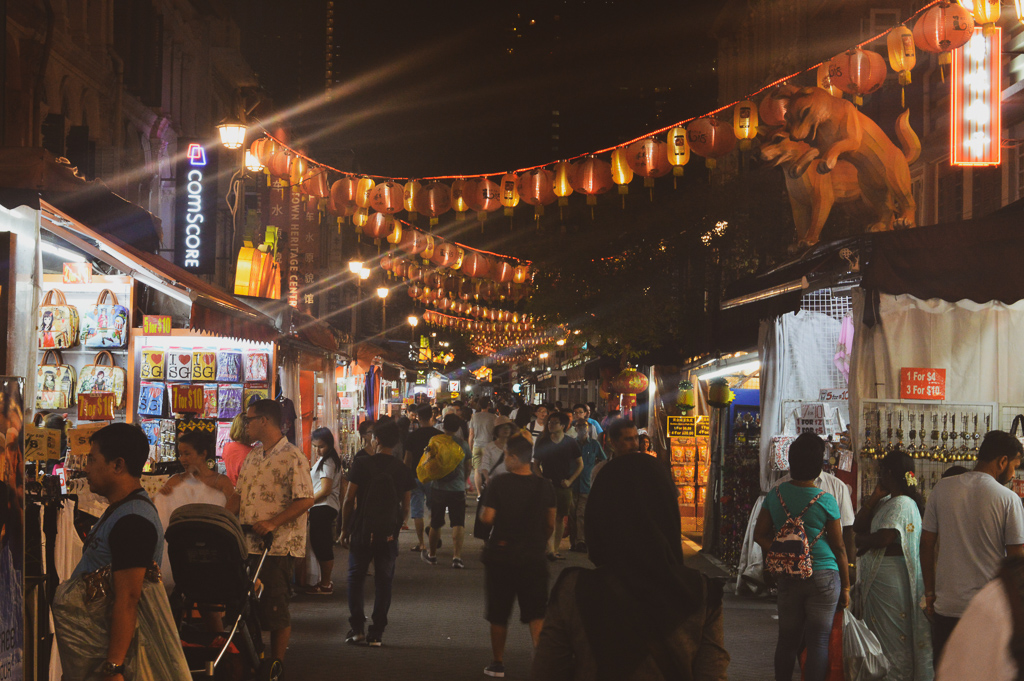
Because we had limited time in Singapore and had plans for our other evenings, we headed back out for street food in Chinatown for our tea. We had a pleasant walk through the Chinatown Complex and its newly revamped ‘Chinatown Food Street’. Even in this part, its advisable to have cash and the nearest cash point to Food Street was back by the MRT (Mass Rapid Transit) Chinatown stop. We had two very fluorescent looking juices from the place on the left if you’re looking back at the MRT.
Unlike the Tekka Centre which was full of locals getting their lunch in the middle of the workday, Food Street was clearly more favoured by tourists. I forgot that the only Michelin star street food vendor was only a few streets away (Hong Kong Soya Sauce Chicken Rice & Noodle) but with a standard 2- hour queue, we were more interested in eating more from more places in that time!
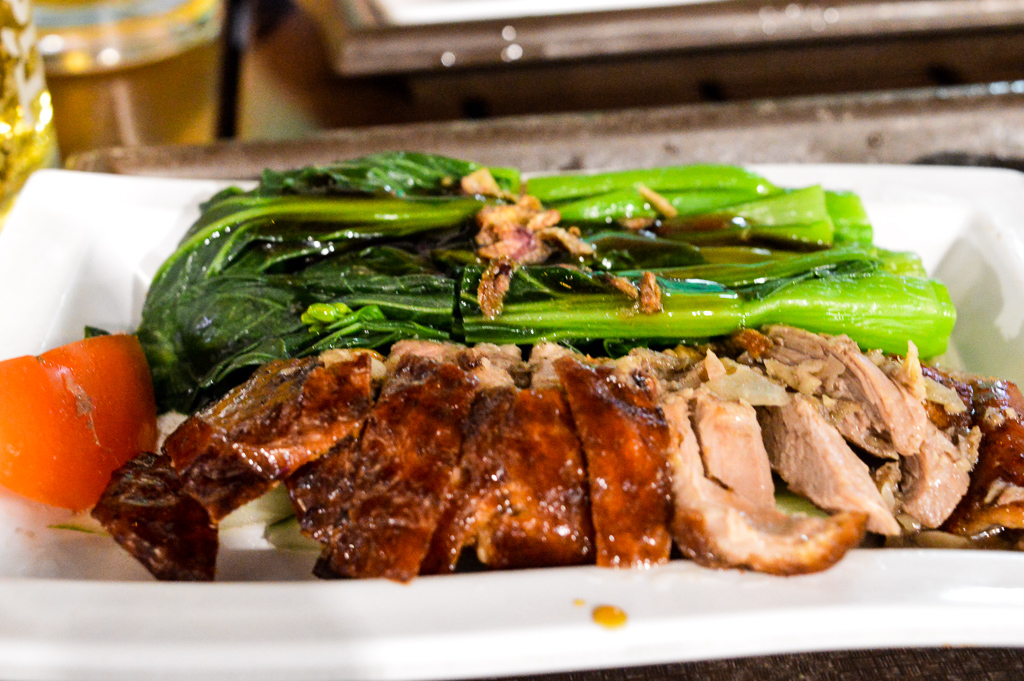
We started with charcoal bao buns from Tim Sum (it was called Tim Sum!) and then headed to Tiong Bahru Meng Kee Roast Duck for the main event: two portions of roast duck, pak Choy and noodles, washed down by two tiger beers. On the way home, Tom couldn’t help himself and needed to have a couple of scoops from The Nice Cream Shop (we were wusses and didn’t opt for the exotic flavours of durian fruit, salted egg or chilli crab.)
Funny really writing this several months after getting back and what sticks in the mind, really is what we ate! As the Lonely Planet says, there isn’t a host of ‘must-sees’ in Chinatown, it’s more about the vibe it exudes. It’s mixed architecture and Chinese lanterns lead the way to good grub.
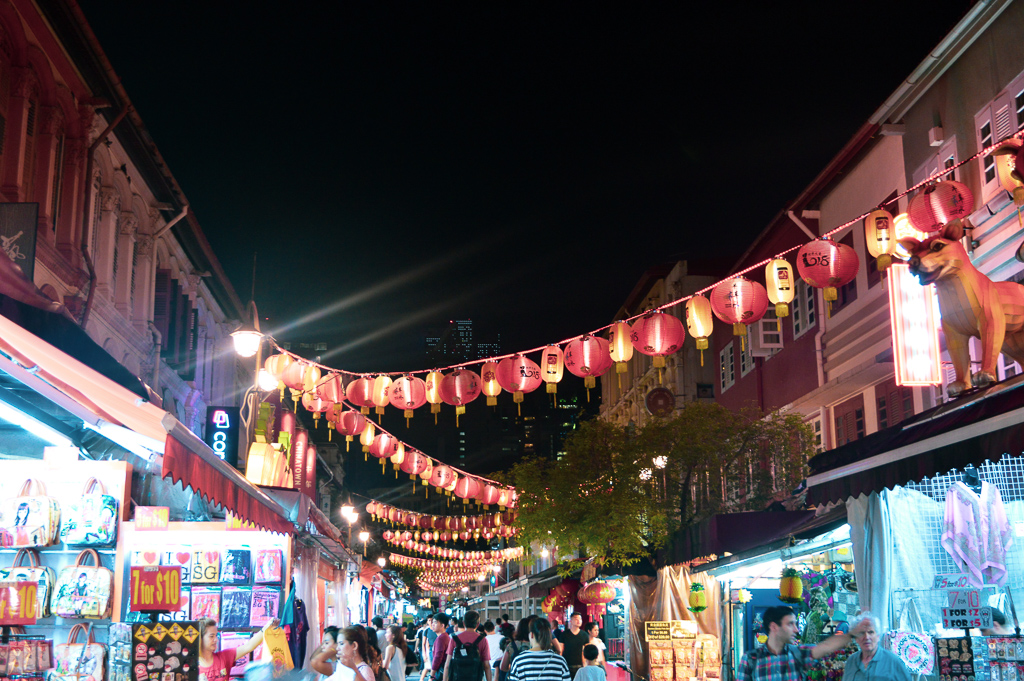
Little India
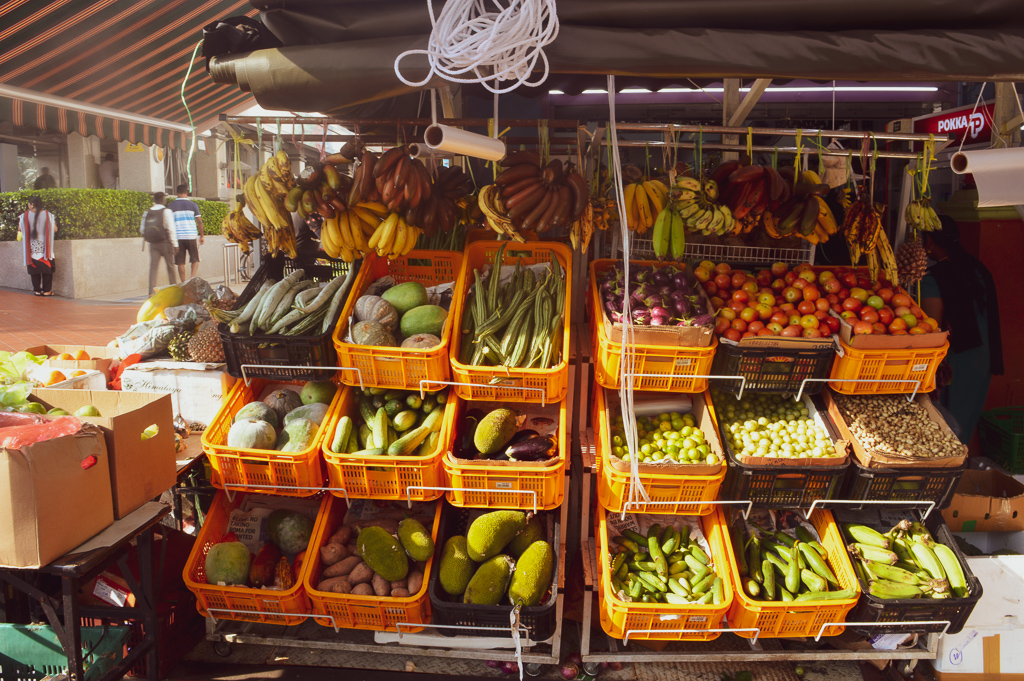
Before we left for a packed day of sightseeing on our second day, we took in a few of the sites in Little India, where we were based. The historical Chulia Kampong district (now defunct) was originally an area of colonial Singapore intended for ethnic Indian immigrants. However, as the area became increasingly crowded, many Indian residents moved to Little India.
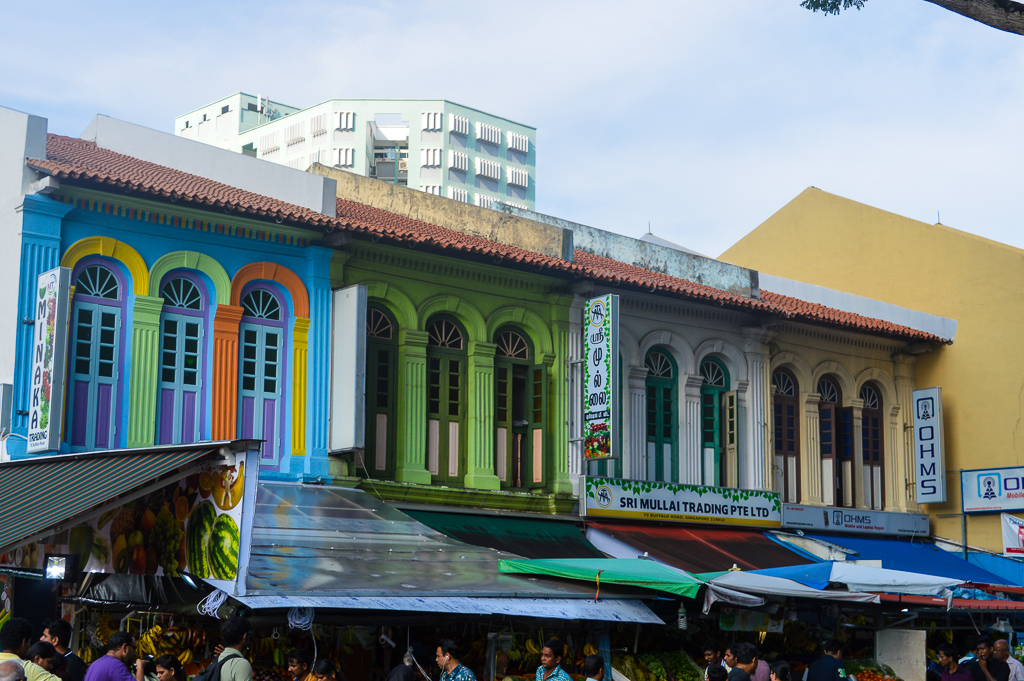
The area is now home to a bustling multi-cultural community; vegetable shops spill their wares onto the streets, older chaps sit outside in the heat, and the distinctive aroma of spices and incense fills the air. It’s also an incredibly colourful area of the city – case in point is the former house of Tan Teng Niah.
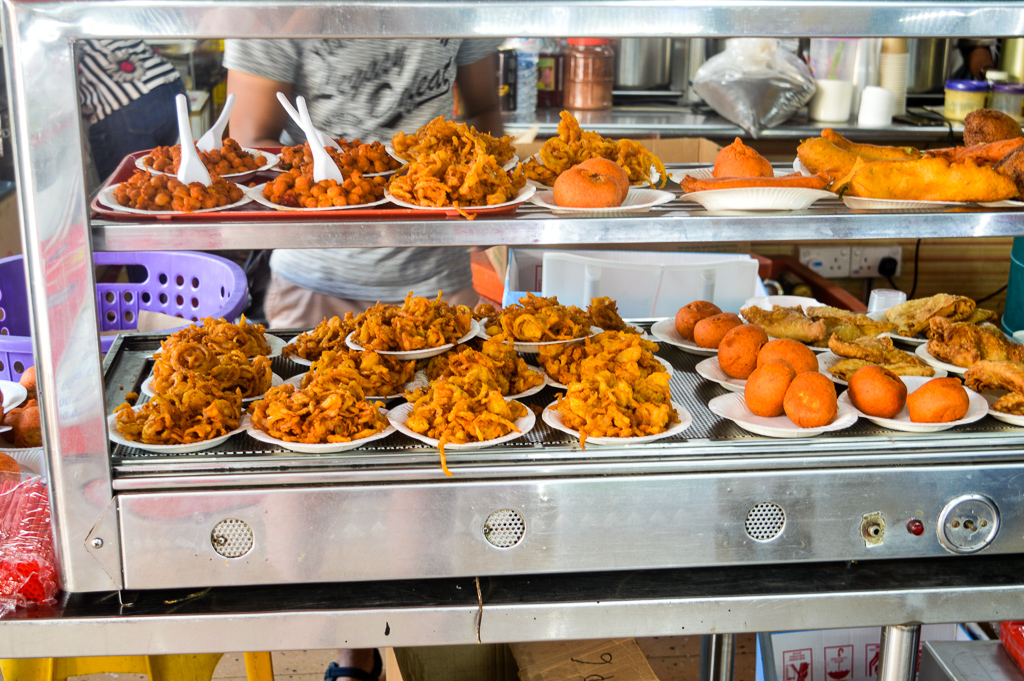
Built in 1900, this is the last Chinese villa in Little India. It’s from a period when small Chinese businesses operated alongside the dominating cattle and rattan businesses which Little India was known for.
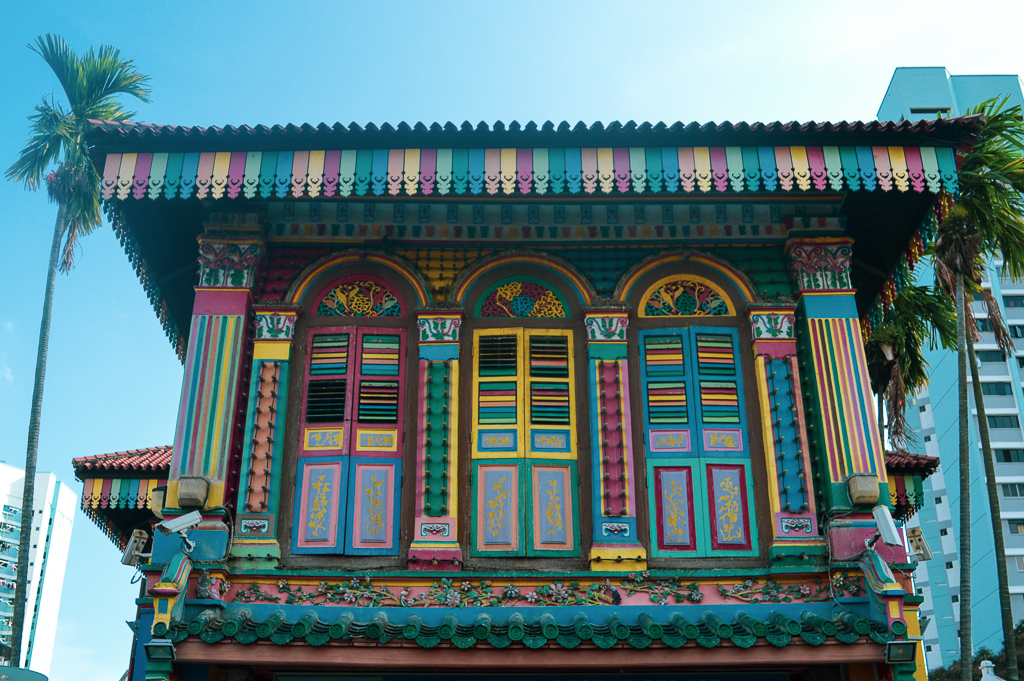
Tan Tenh Niah was a towkay – a businessman of good standing who owned several sweet-making factories along the Serangoon Road which used sugarcane to produce sweets. Behind the house, Tan had a rubber smokehouse for drying rubber which used the byproducts of sugarcane as fuel for its furnace. The house has eight rooms and the second storey overhangs the first to create a pedestrian walkway. The building was originally white, but was colourfully repainted as part of a restoration in the 1980s. It now forms part of the Little India Heritage Trail, which is worth following through – we ended up crisscrossing it quite a bit.
Lagnaa Barefoot

And if you are in the area, then we’d recommend barefoot restaurant Lagnaa, where we ate on our first night. I was not expecting to literally remove my shoes, but if you sit upstairs you’ll see a pile of flip flops on one side. Sat at low tables on cushions, we tucked into a mixed thali. Lagnaa has its own chilli index, five and below is generally considered the usual affair. Six and above only for the brave and true hotness aficionados. If you’re feeling particularly triumphant you can write your name to a peg and clip it on the wall downstairs.
Haji Lane and Kampong Glam
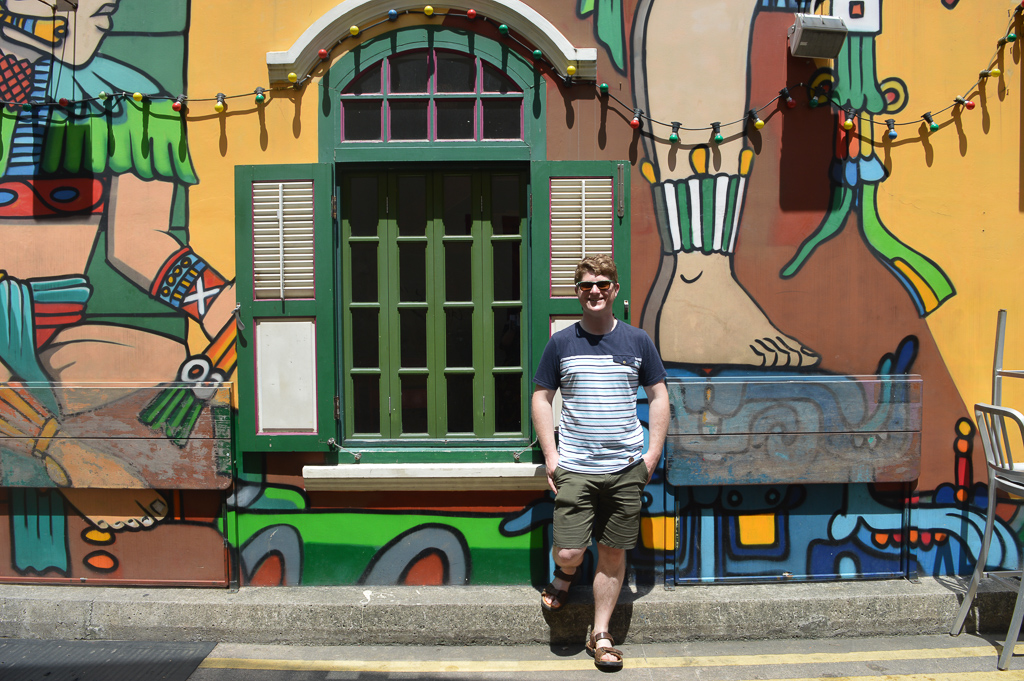
From Little India, we headed to Haji Lane, which was thirty-minute walk from our hotel. If you’re an avid Lonely Planet stalwart, you might miss Haji Lane as it is only very briefly mentioned. I’d actually read about the colourful shopping street on another blog before we left and I’m glad we visited.
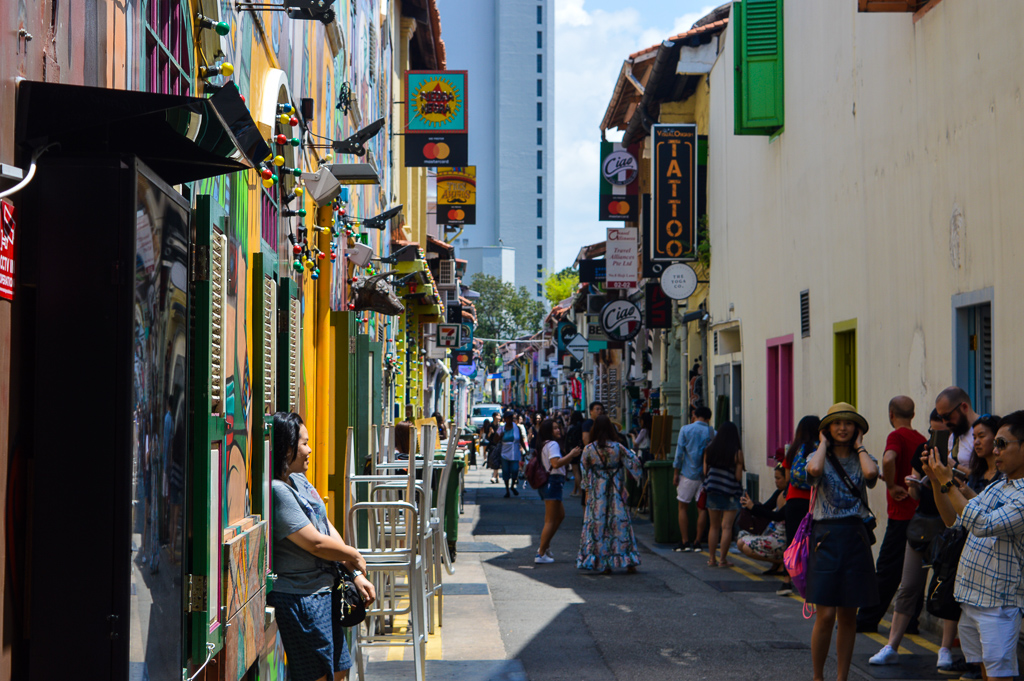
Graffiti from traditional Javanese murals to futuristic soldiers adorn every corner of this street. It is home to a tight community of eclectic designers and entrepreneurs, the street contains both a Sherlock Holmes inspired barbershop and a cafe dedicated to all things Dutch – I Am. At the end of our shopping excursion, we stopped here for a cold latte.
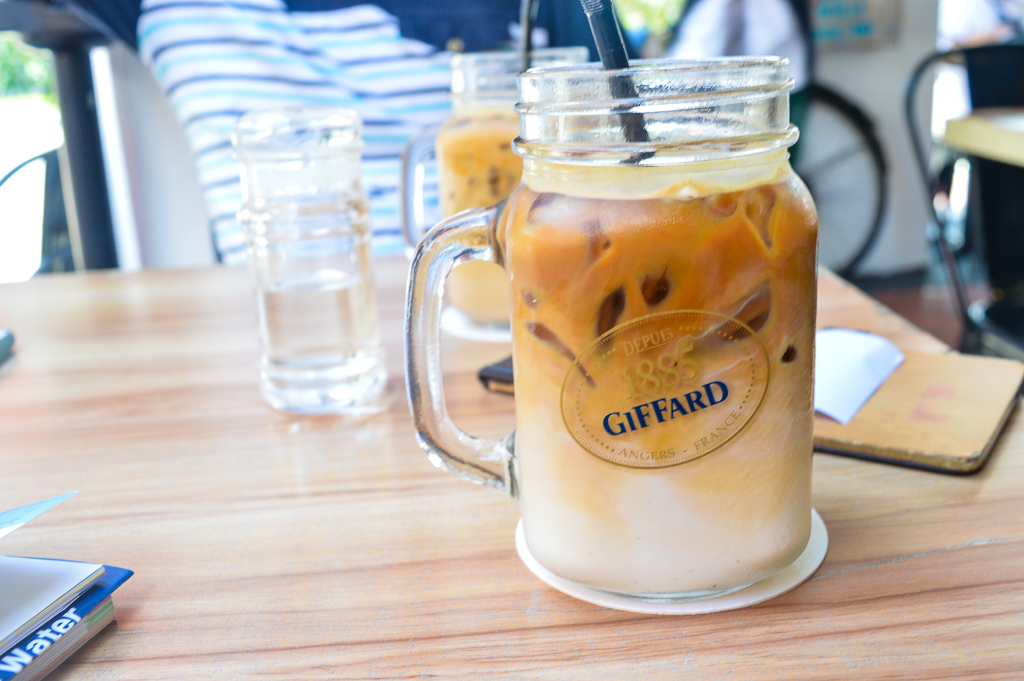
With those colourful walls, you can imagine that it’s dead popular with the Instagram crowd. And of course, I had Tom pose. It’s not a terribly long street so we spent an hour so wondering down the road, popping into the odd vintage stop.
From here we then walked further into the Kampong Glam area, also dubbed Arab Street, it’s essentially the Muslim quarter. The Sultan Mosque provides the central point and is one of Singapore’s most impressive religious buildings. Built in 1824 for Sultan Hussein Shah, the first Sultan of Singapore, Sir Stamford Raffles donated $3,000 to its construction.
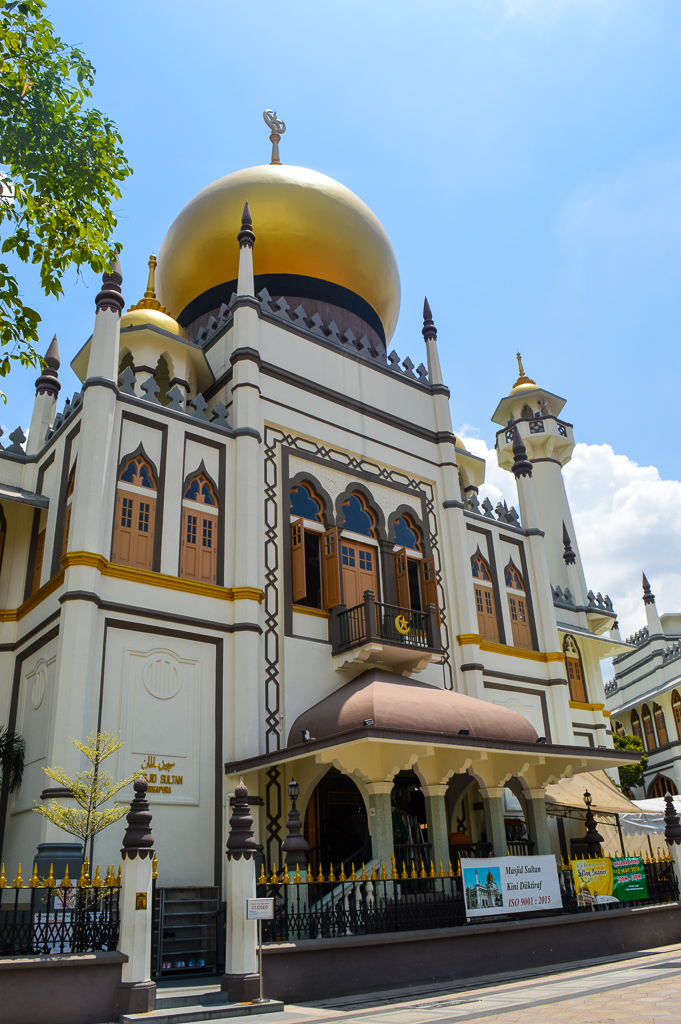
I found out afterwards that if you look closely at the golden domes you’ll see that each one is decorated with the ends of glass bottles, which were donated by poor Muslims during its construction – their contribution to the monument. From here, we decided to catch the bus (thank goodness for the Citymapper app!) to Raffles Hotel, where we planned to have our first Singapore Sling.

Just like when we went to the states a few years ago and rocked up to go to Dollywood on the only day of the week it was shut, we managed to pitch up at Raffles whilst it was under renovation. We checked out their ‘pop-up’ experience, where they’d basically installed an MDF bar into their gift shop and still had the cheek to charge £40 for a cocktail! We gave up on that for a laugh and headed to the Singapore Flyer.
Singapore Slings on the Flyer
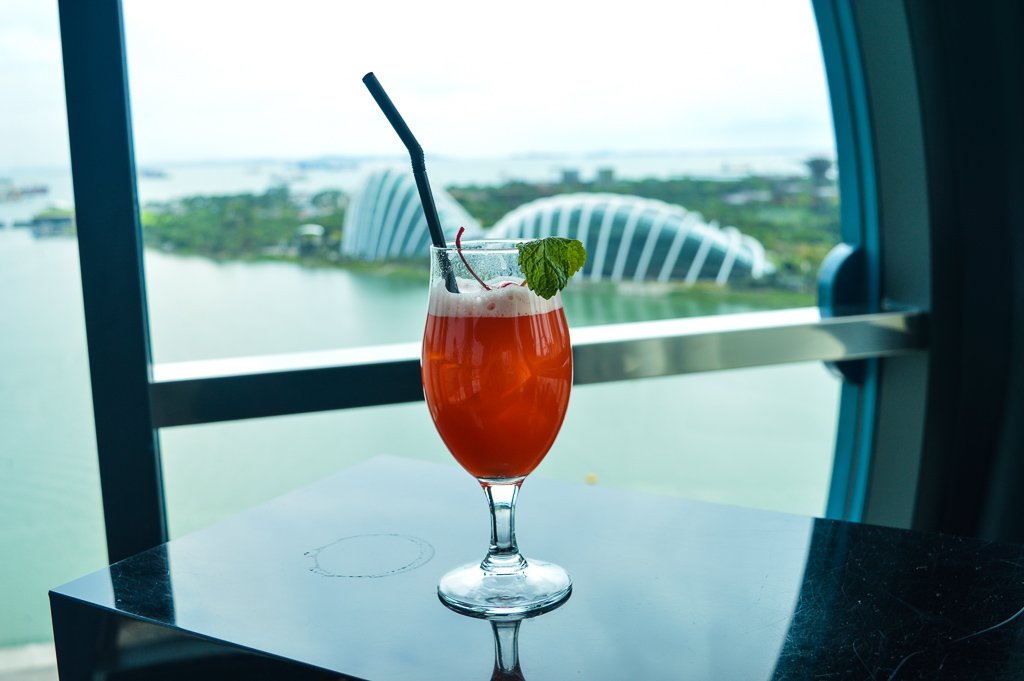
From Raffles, we could spot the Singapore Flyer and we walked towards the giant Ferris wheel. I think we must have approached from an odd direction because we walked through a multi-storey car park that was completely deserted to get to it. When we found the ticket booth, we upgraded our tickets to include the Singapore Sling ($69 per adult).
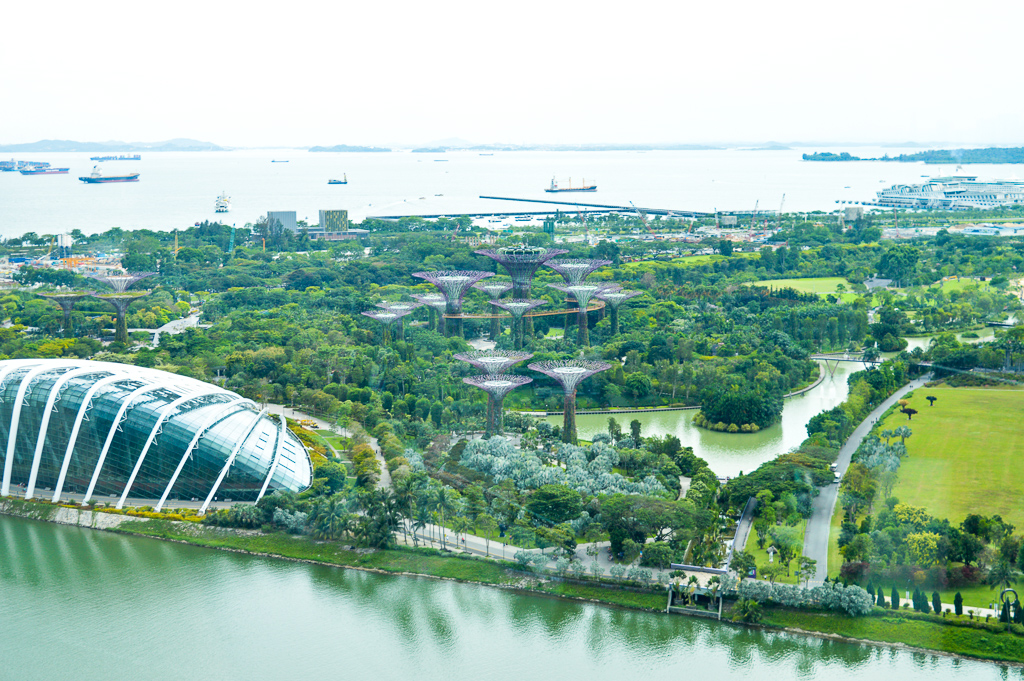
We were shown to a special VIP area and waited to be shown up to the carriages. As we got to the top we heard an announcement that a thunderstorm was passing through and the Flyer would be closed… we weren’t having much luck.

We resumed our seat in the VIP area and waited to see if the storm would pass, which it did. We were taken through the roped off areas to the front of the queue where we waited for a special Moet bedecked carriage. A waiter stepped through the other side brandishing two cocktails and quickly stepped off, leaving us to our own carriage.
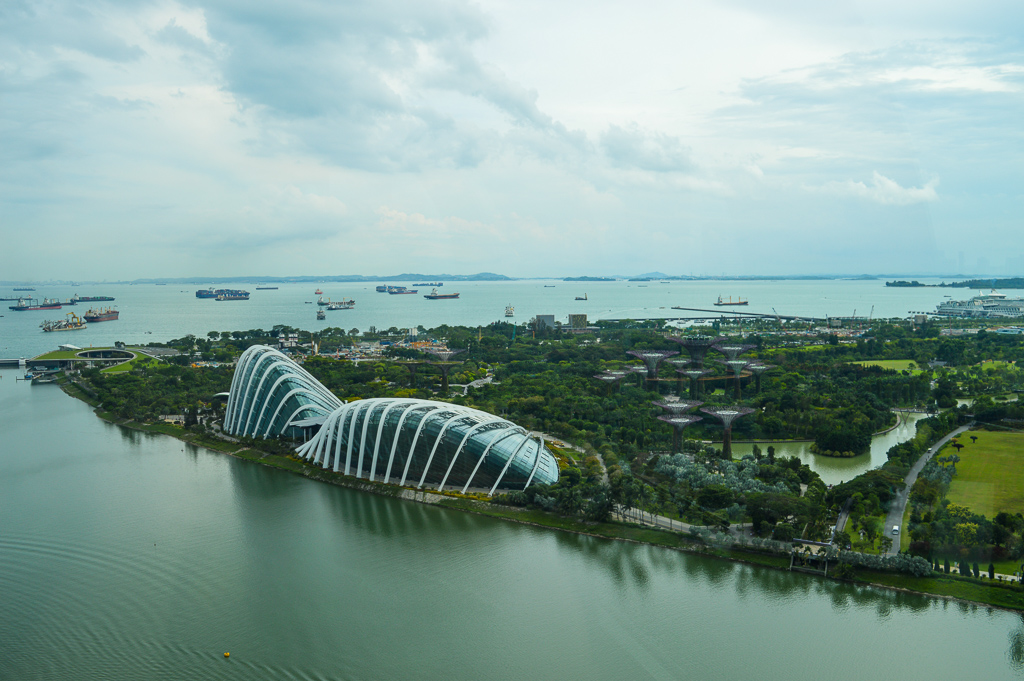
The Singapore Sling was supposedly invented by Ngiam Tong Boon, a Hainanese bartender working at the Long Bar in the Raffles Hotel and usually includes gin, cherry brandy, benedictine, a dash of bitters, Cointreau, finished with grenadine, pineapple and lime juice. We enjoyed sipping our Singapore Slings over the half-hour it takes to go round the full rotation, from here you can get a good view of Gardens By the Bay and Marina Bay Sands.
Supertree Grove
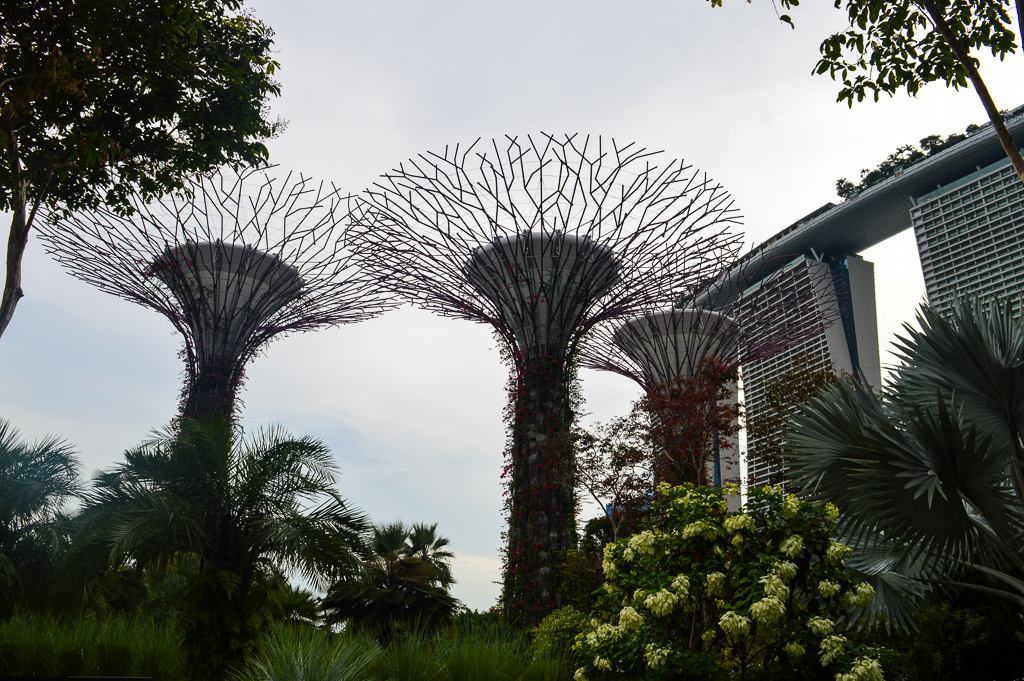
Gardens By The Bay with the Marina Bay Sands Hotel in the background is now one of the most iconic shots of Singapore. The spaceship shape of the hotel coupled with the giant trees of Supertree Grove looks like the futuristic cityscapes comic book artists envisioned and drew during the space race of 1969. It’s awe-inspiring to say the least.
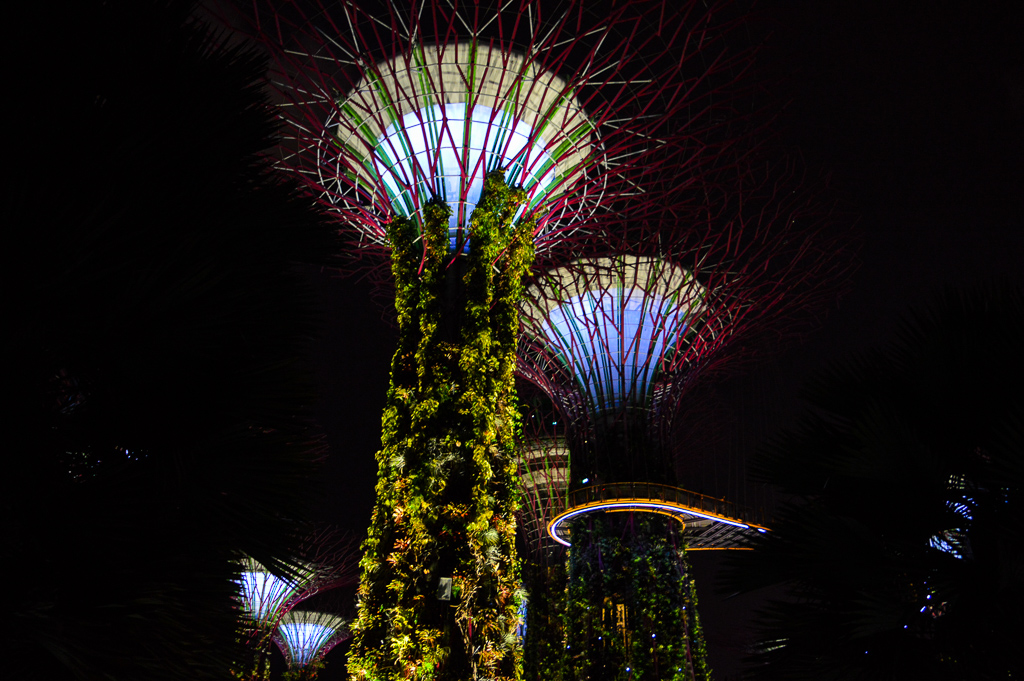
Over 2 million trees have been planted in Singapore in the last 40 years and the conurbation is now richer in species diversity than any other city in the world. But as David Attenborough says in Planet Earth II, perhaps the most spectacular example of city greening is Supertree Grove. Eighteen giant steel-framed ‘supertrees’ stretch between 25 to 50 metres tall – about the equivalent of a 16 storey building.
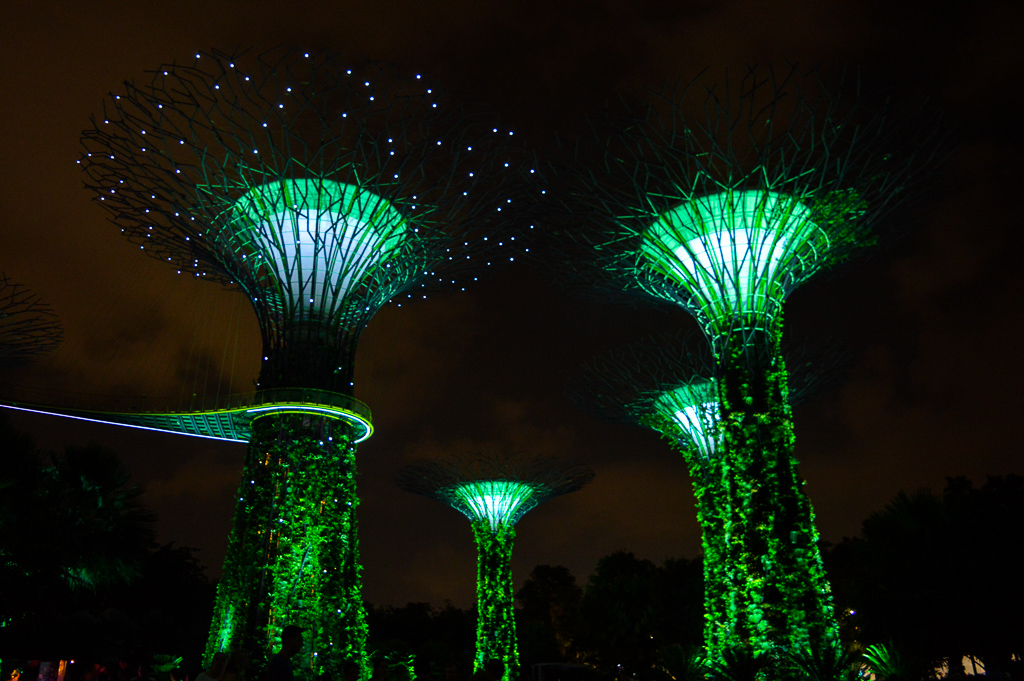
Each Supertree is clad in planting panels which have been planted with over 158,000 plants including 700 species of bromeliads, orchids, ferns and tropical flowering climbers. Most of the plants were chosen to suit vertical planting, easy to maintain, required no soil and also because they are not commonly found in Singapore (I’m not sure that the last point is an entirely good thing?)
As well as supporting a new habitat, the trees also include photovoltaic cells which store solar energy to light up the trees whilst others act as air exhaust funnels for the greenhouse domes. We did both the Singapore Flyer and visited the Observation Deck at Marina Bay Sands Hotel, but I do wish we had also bought a ticket for the OBC Skyway – a 128-metre long walkway which connects two of the supertrees; the view is apparently meant to be awesome.
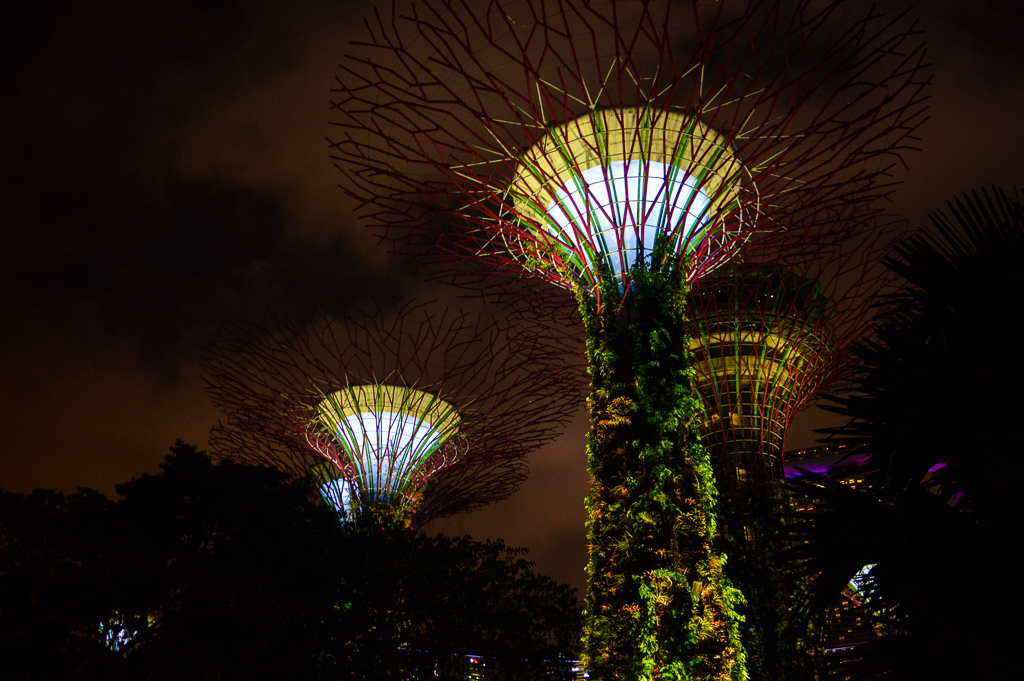
We did, however, get a good spot for the Garden Rhapsody Show – a light and sound show which illuminates all of Supertree Grove. You can catch it at 7.45pm and 8.45pm and each month takes on a different musical theme. We had Garden Waltz which lasted 12 minutes starting with Schmidt’s Prelude Et Fugue Sur LE Nom D’alain, Op.7: Fugue; Tchaikovsky’s The Nutcracker and Swan Lake; and ending with Jacque Offenbach’s Infernal Galop.
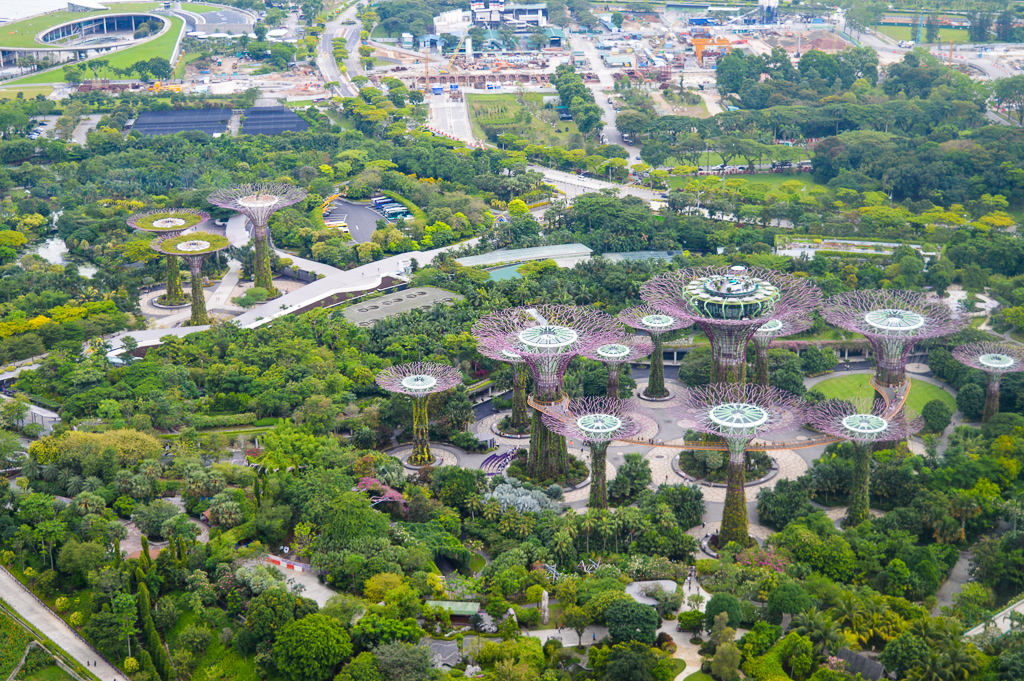
The Flower Dome
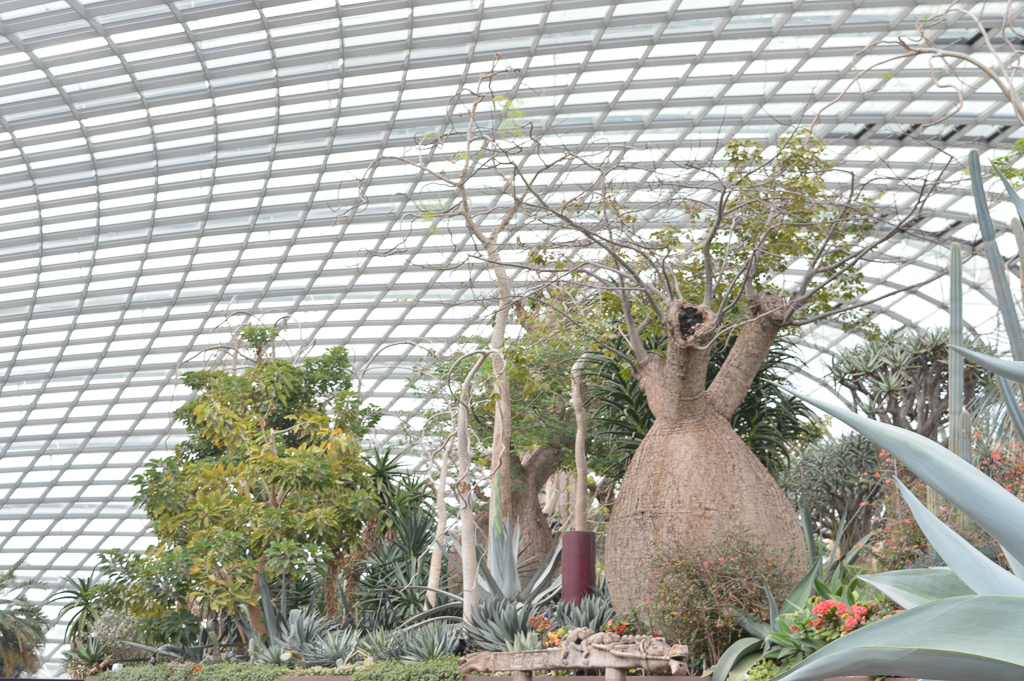
Supertree Grove is actually just one part of Gardens By The Bay, which in total is a $1 billion, 101-hectare garden including two greenhouse biodomes, known as ‘Cooled Conservatories’, reminiscent of Cornwall’s Eden Project. The Flower Dome replicates a dry Mediterranean climate whilst the Cloud Forest houses a tropical mountain with a waterfall.
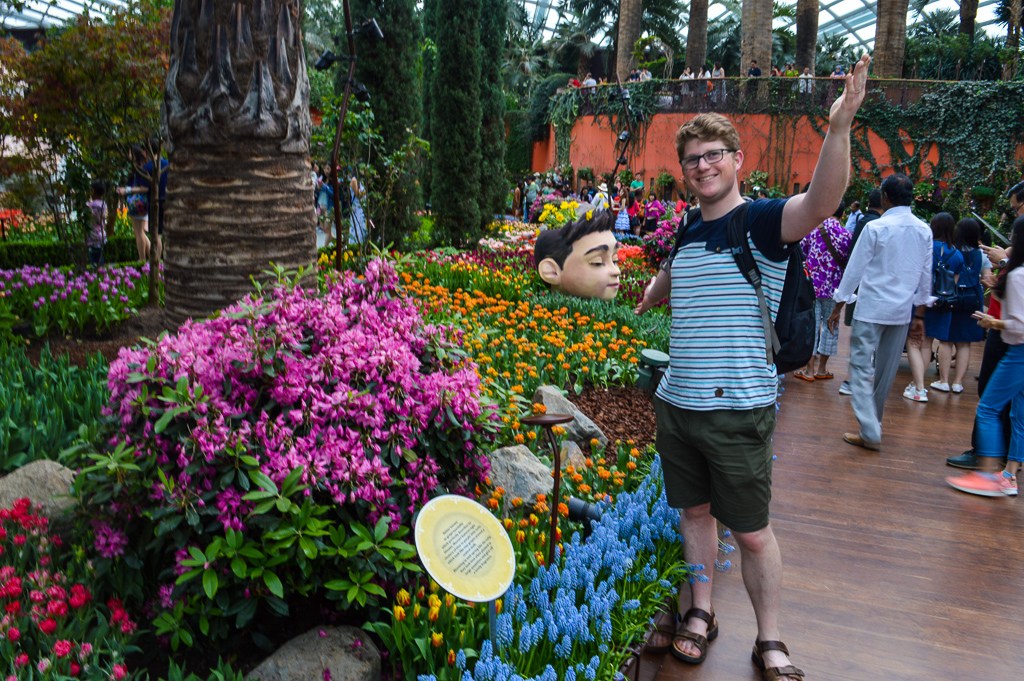
The Flower Dome hosts an ever-changing floral display. Tulipmania has been a regular favourite for the last few years and was in full bloom when we visited. This year’s festival had a strong Dutch fairytale theme. There was a small village complete with tulip-laden cottages, a windmill and chicken sculptures which were overshadowed by a number of sleeping giants. Several giant heads which blinked lay amongst the flower displays; it was a tad alarming.
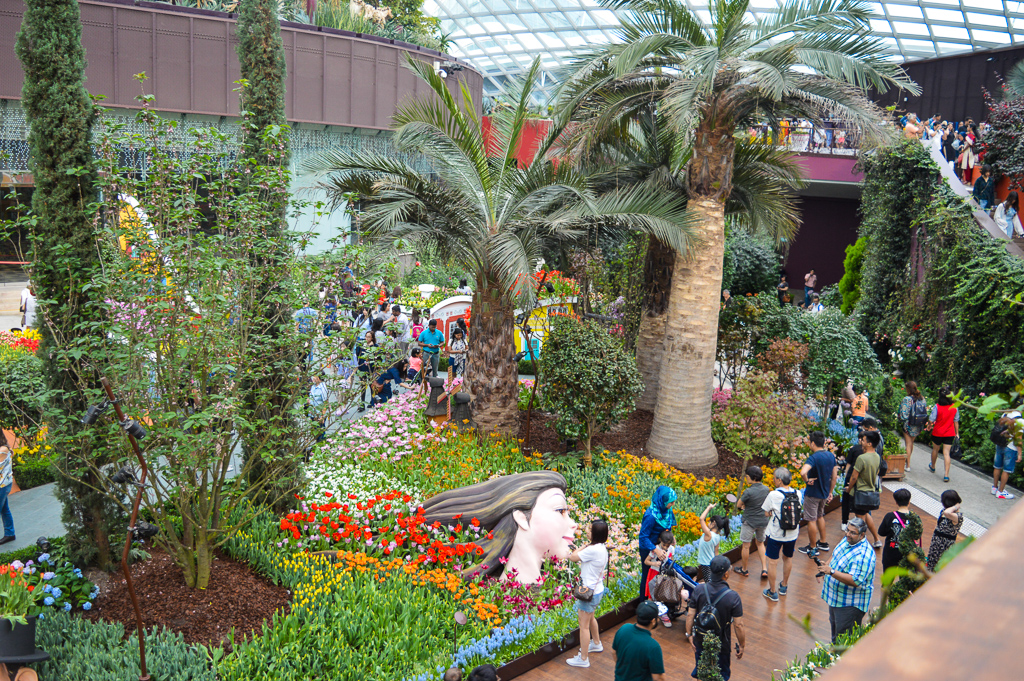
Ignoring the slightly odd theme, the Flower Dome was carpeted in 90,000 tulips with over 35 varieties including ‘Yellow Flight’ and the red and white ‘Singapura’ which commemorates the 200th anniversary of Singapore’s founding.
Cloud Forest
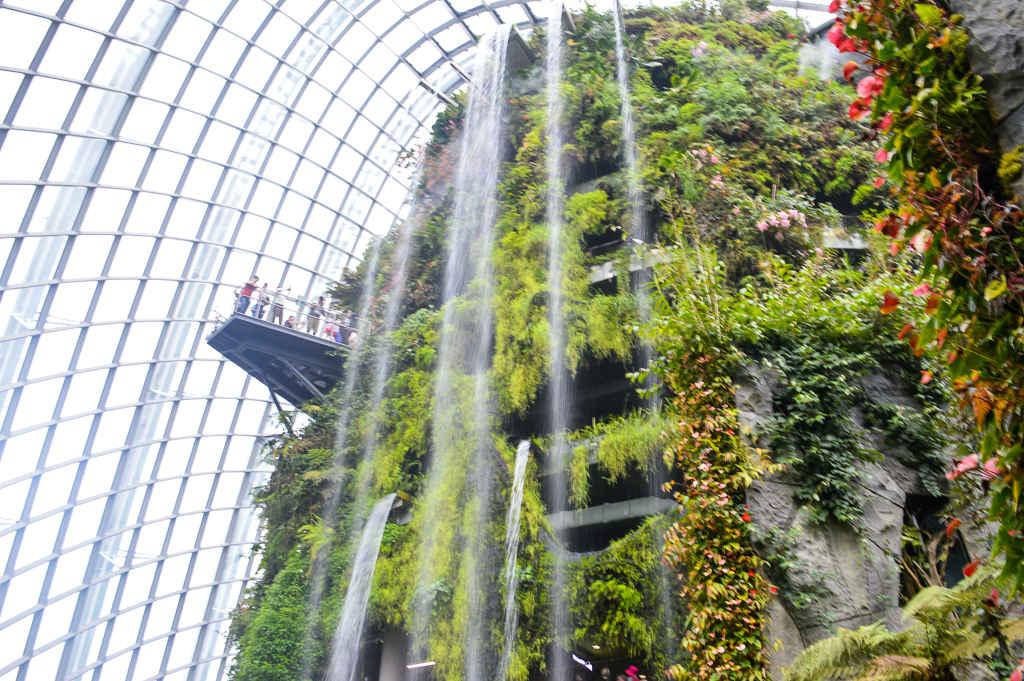
We did Supertree Grove, which is free to enter, plus the two ‘Cooled Conservatories’ in one afternoon and I felt we had plenty of time. Cloud Forest includes the world’s largest indoor waterfall, a 35-metre tall mountain covered in vegetation which is normally at home in tropical highlands up to 2000 metres above sea level. It’s between 80% to 90% humidity in the dome, replicating the conditions of the Tropical Montane region.
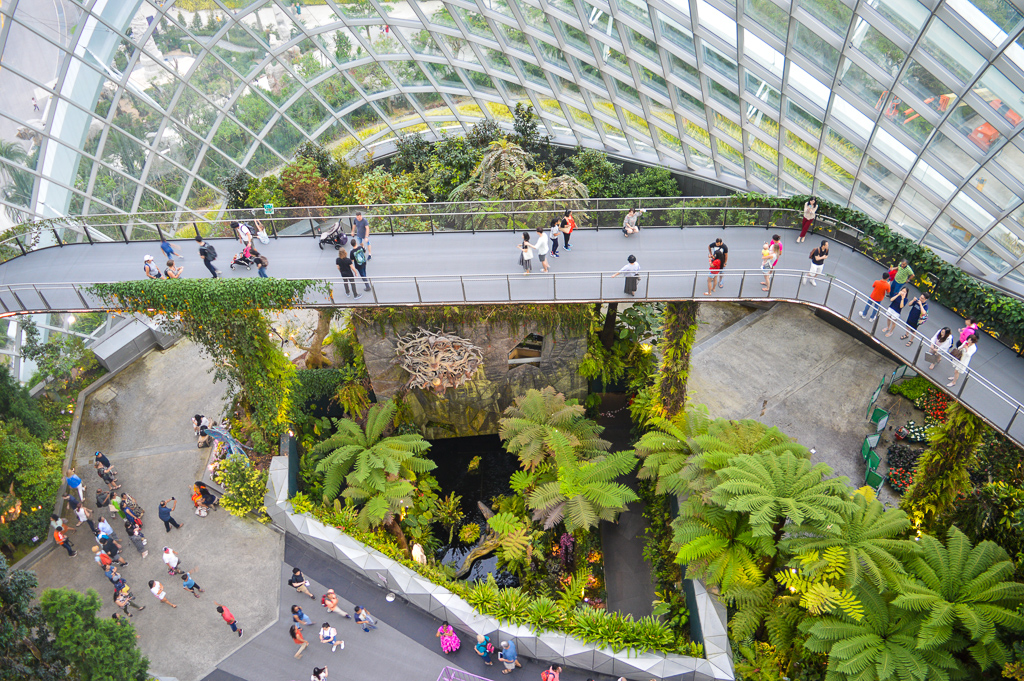
You make your way through the mountain to the central pool at the top or the ‘Lost World’, which had several Lego sculptures of tropical vegetation, before descending via the mist-clad Cloud Walk and Treetop Walk. (The Flower Dome and Cloud Forest cost us $28 per person.)
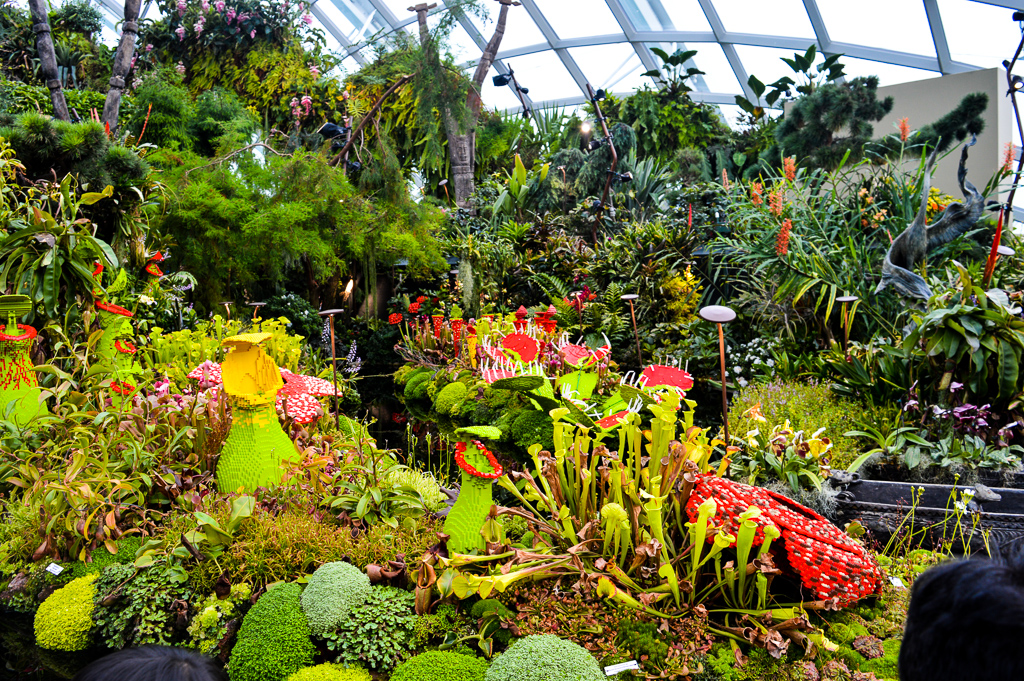
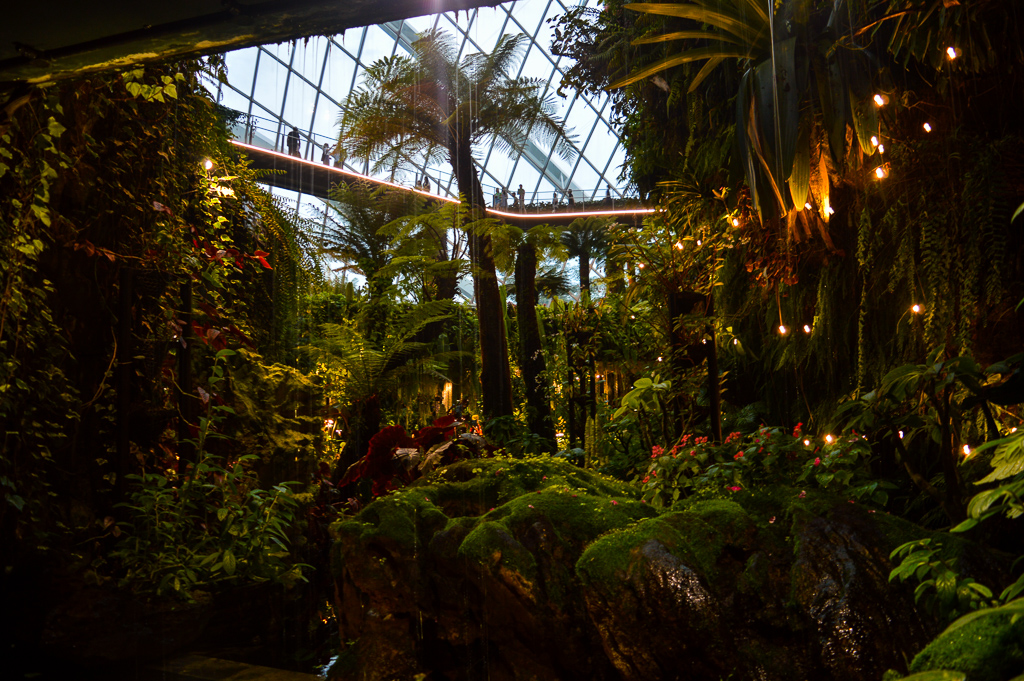
Satay by The Bay
Having spent the day enjoying all the sites of Garden by the Bay, it would have been rude to not have visited its own hawker centre – Satay by the Bay.
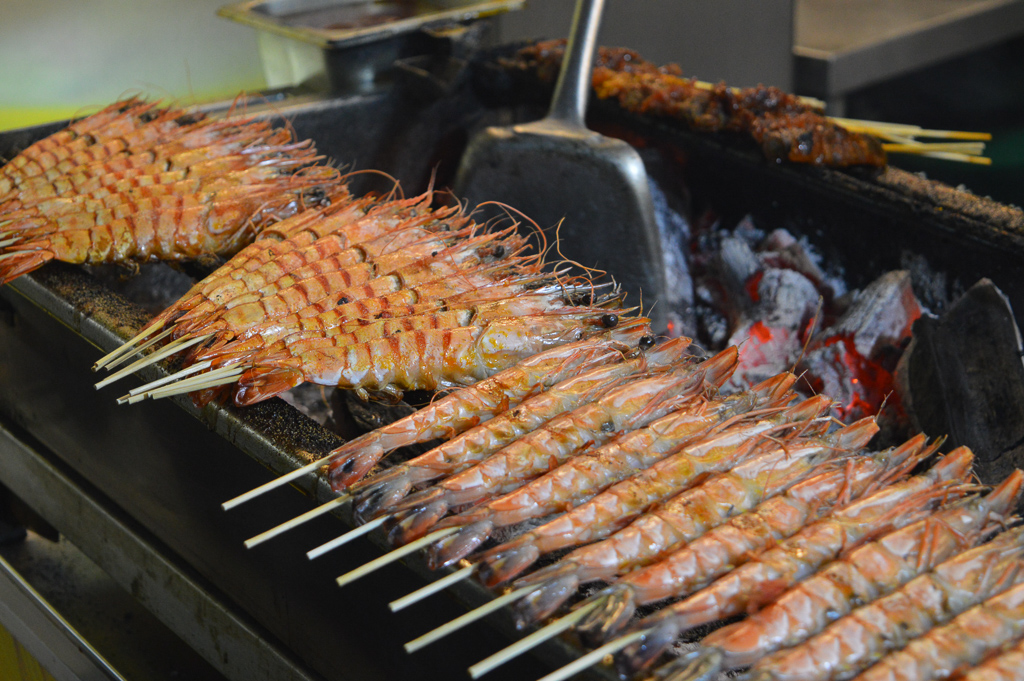
I’d definitely recommend Satay by the Bay, it may be geared towards tourists, but I think of the three hawker centres we visited that this one had the most choice. There was a whole host of different forms of satay – prawn, chicken, vegetables, tofu. We opted for chicken and beef satay mix from Sri Geylang Sate, No. C5 & C6. It’s reportedly more traditional than other stalls and is named after Singapore’s historic Malay quarter. We also had two portions of chips from the stall 26, or 26@Marina.
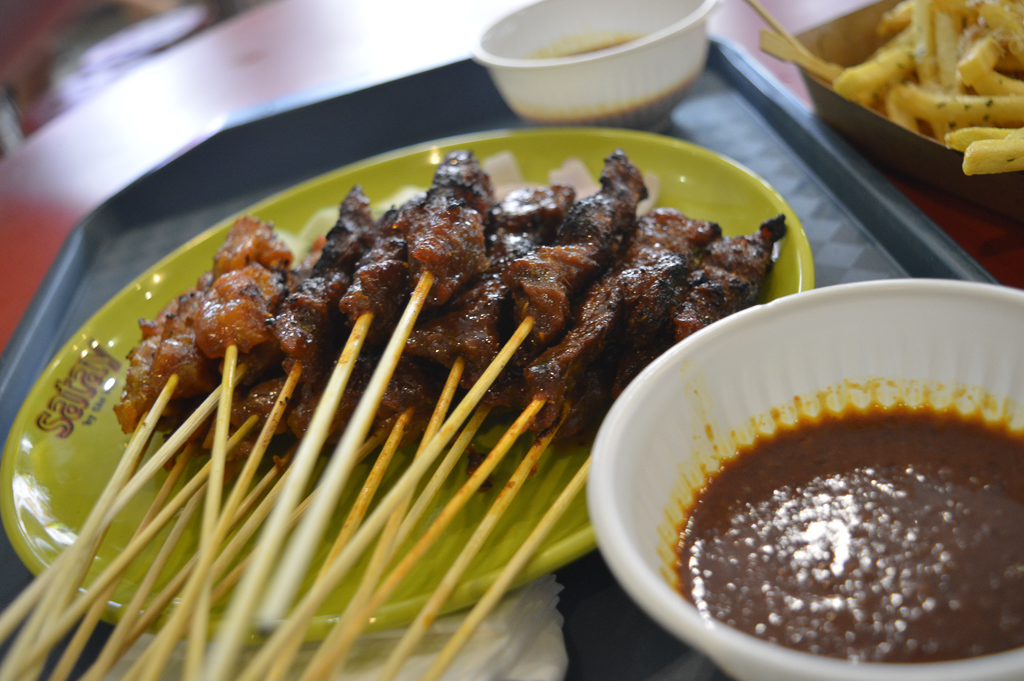
Satay by the Bay does have an enviable location looking out to Marina Bay and its most atmospheric as the sun sets. It is open to about 10.30pm, which made it a good food stop for us in between schmoozing around the gardens and waiting for the first of the night’s light shows.

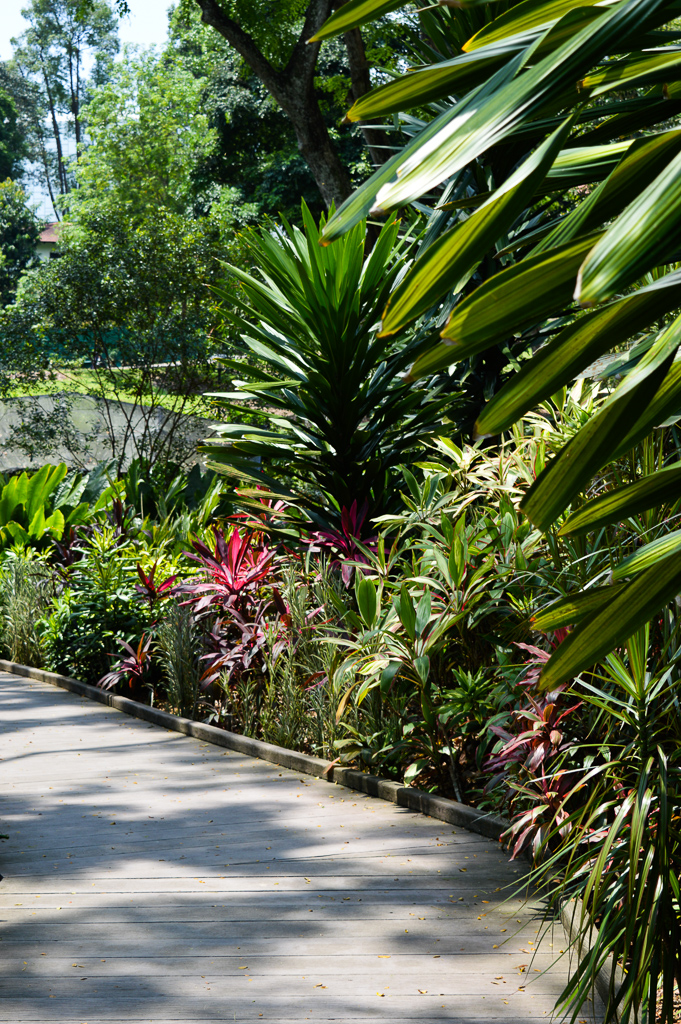
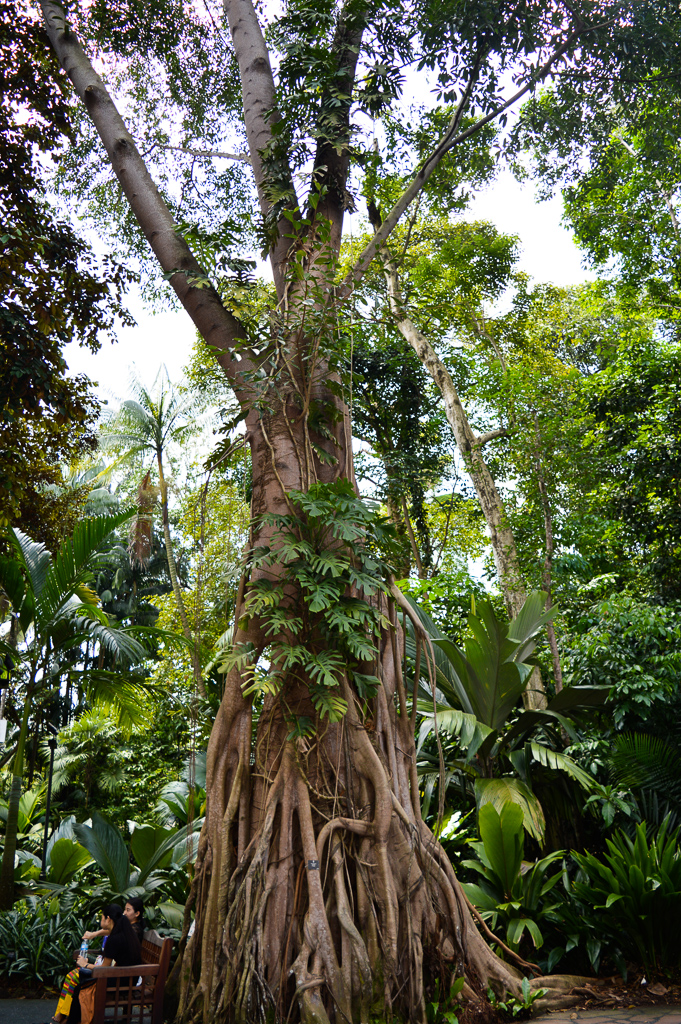
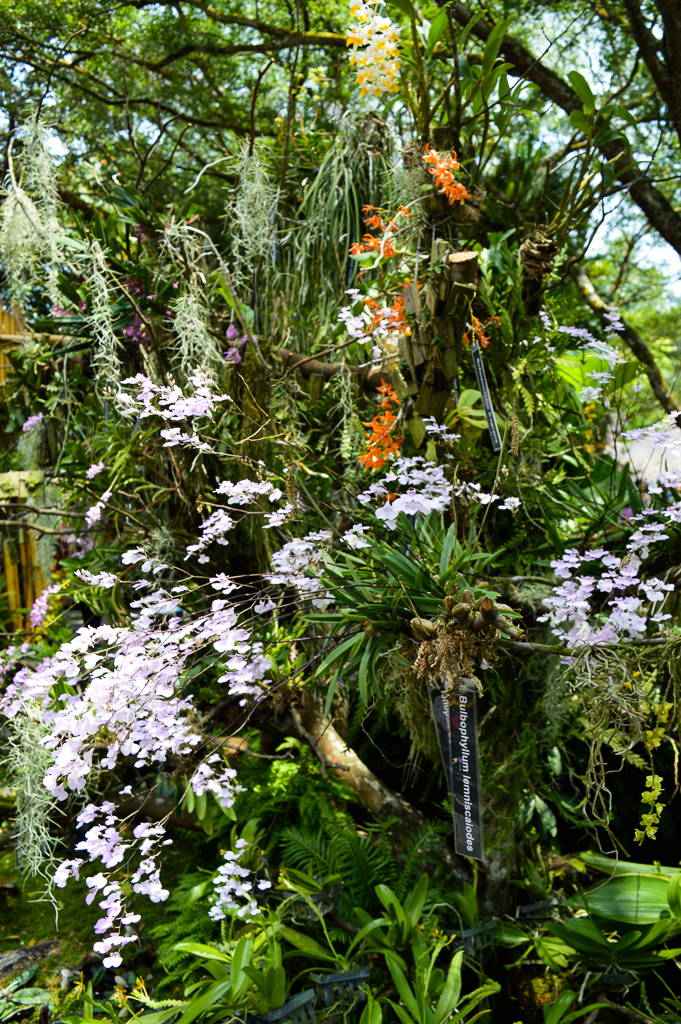
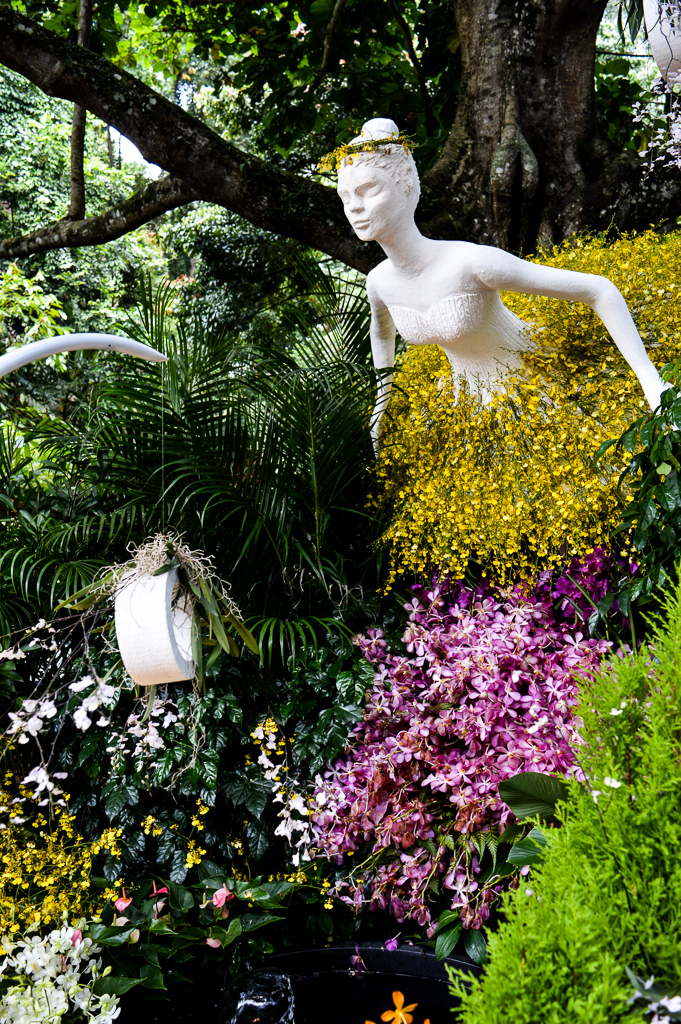
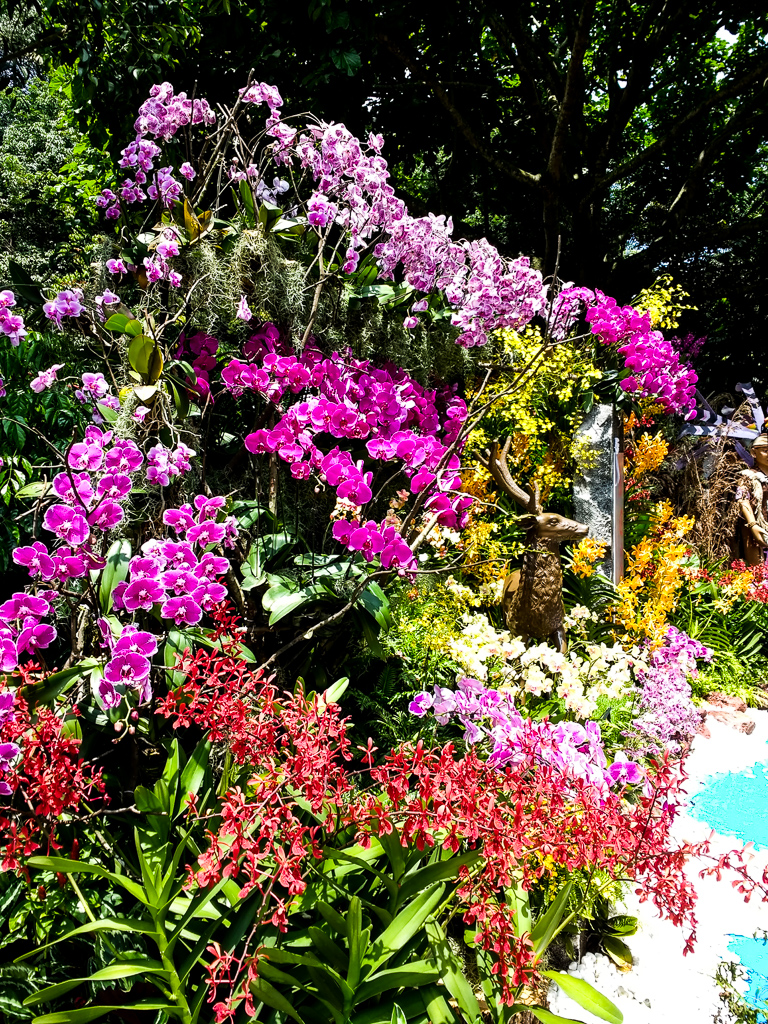
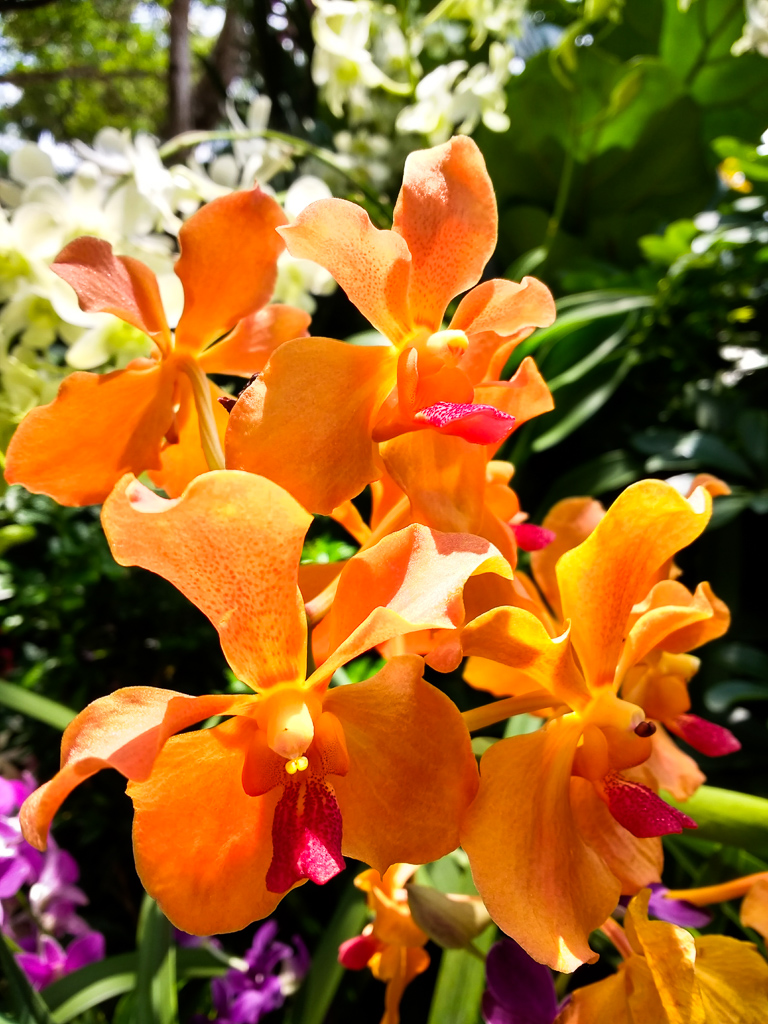
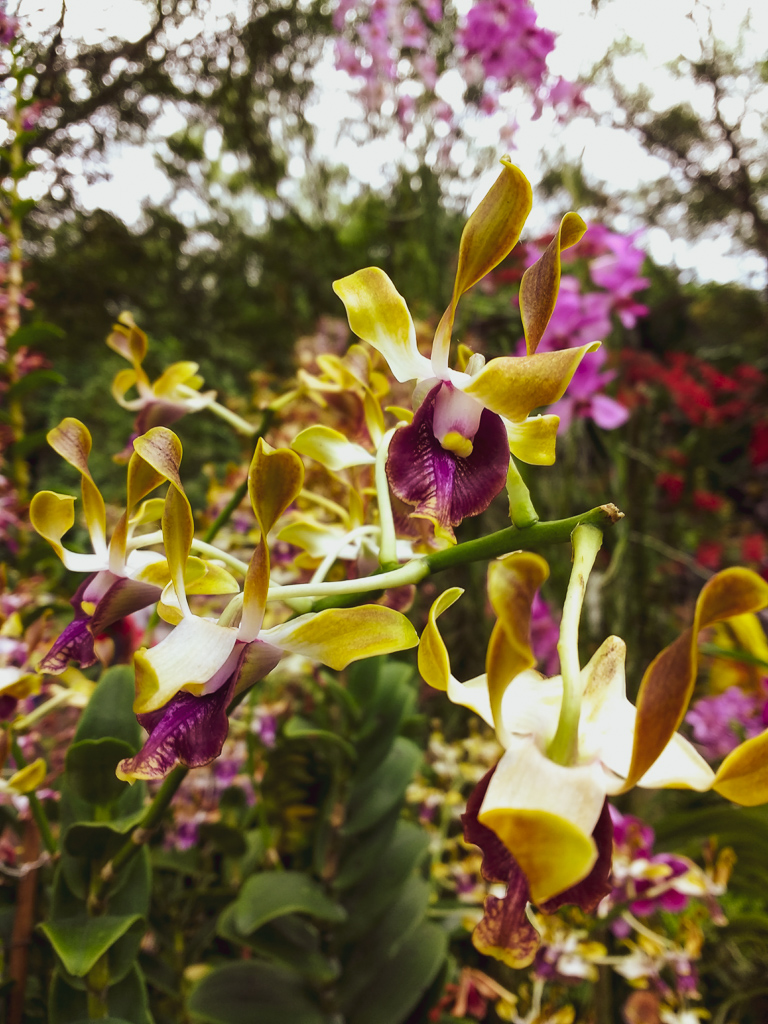
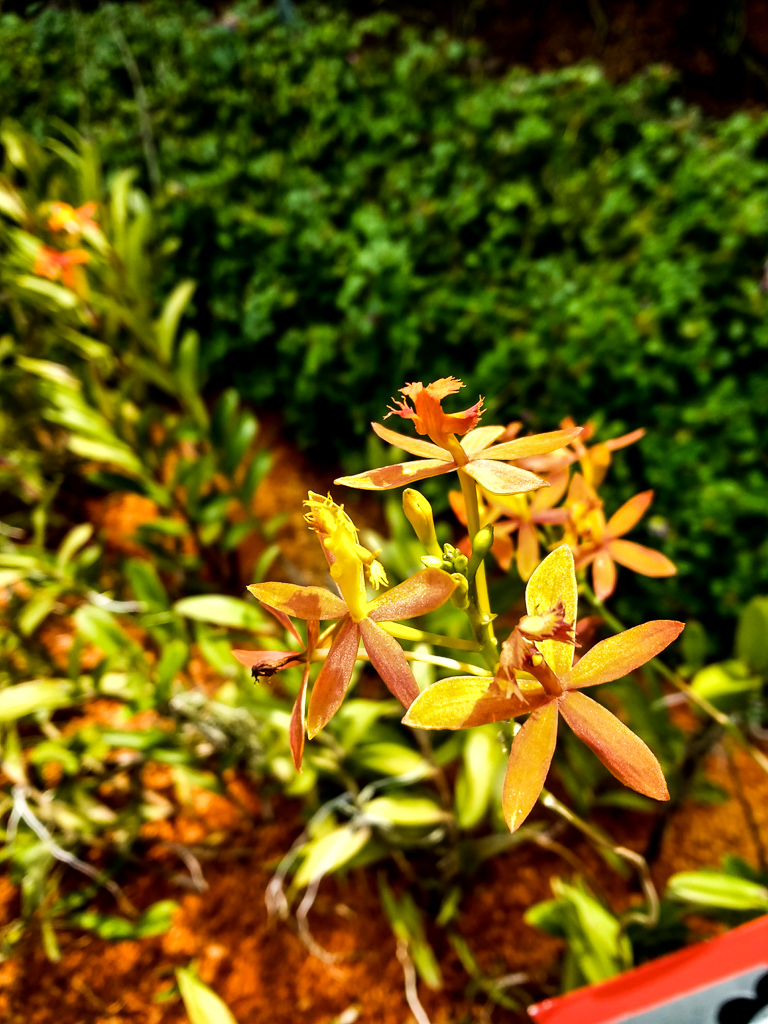
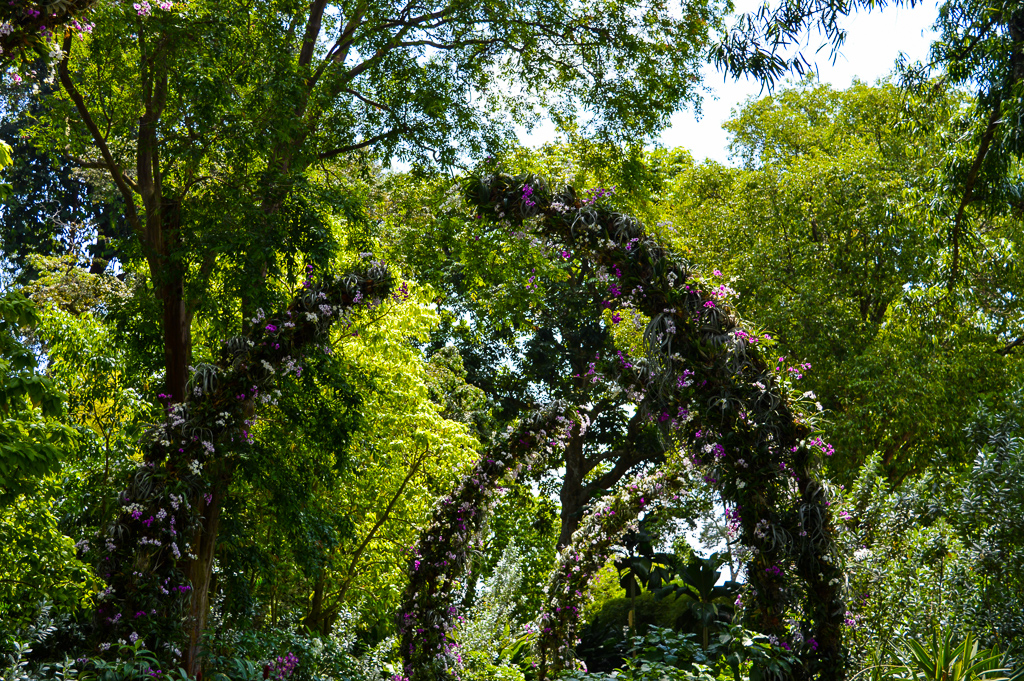
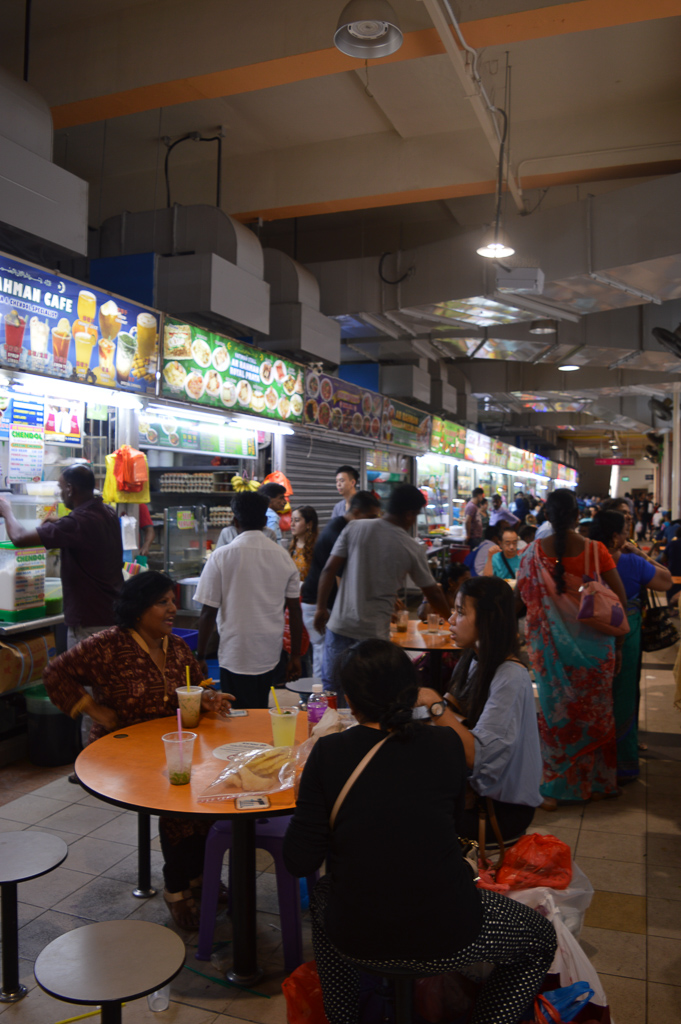
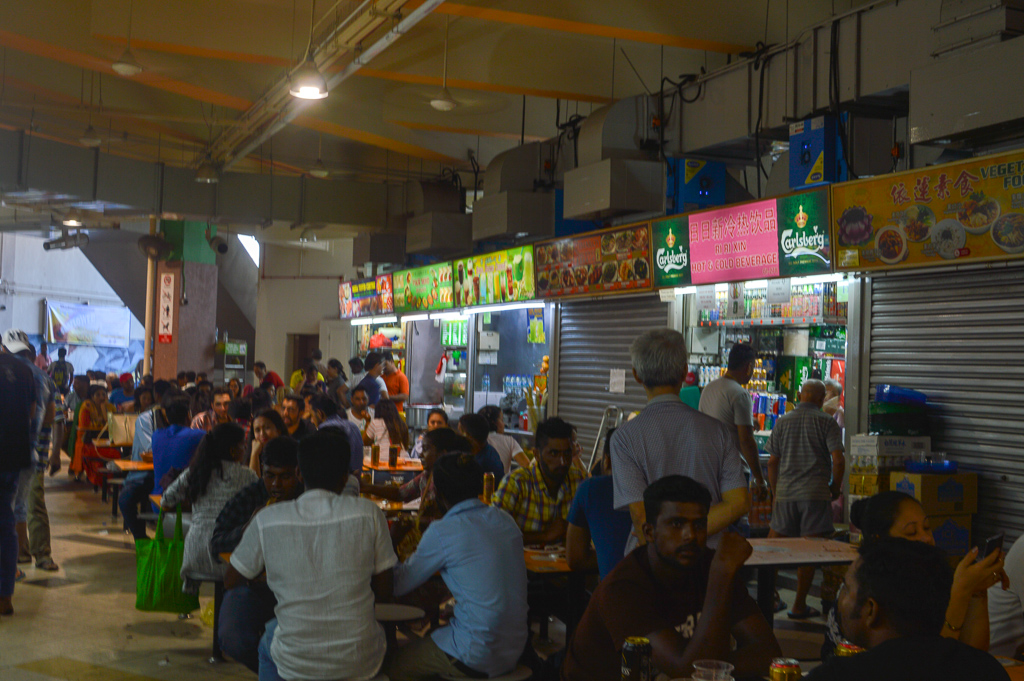
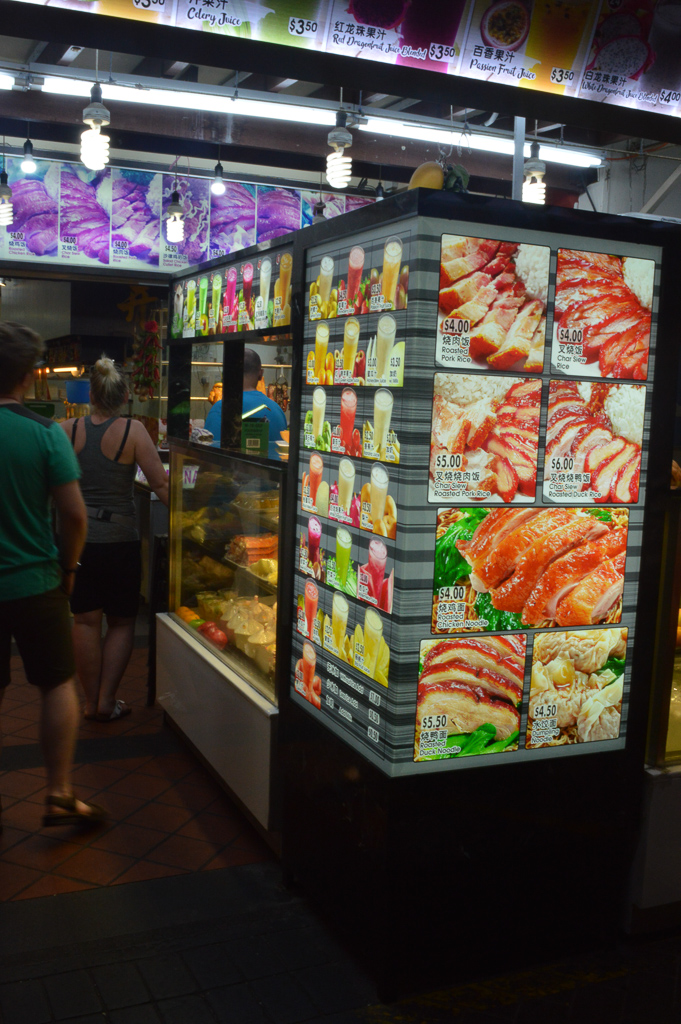
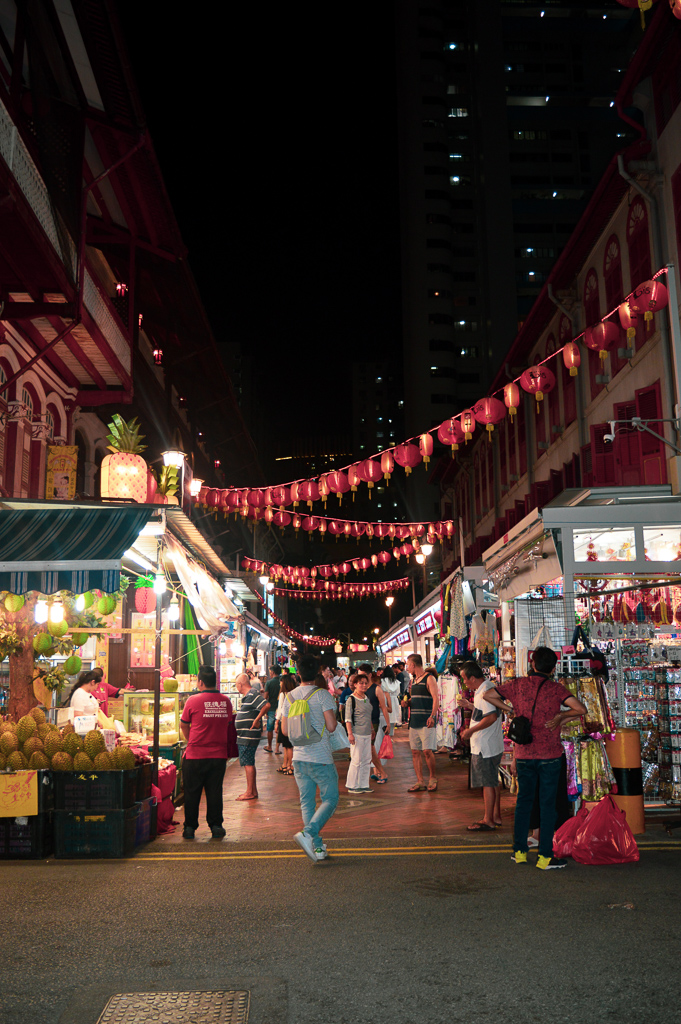
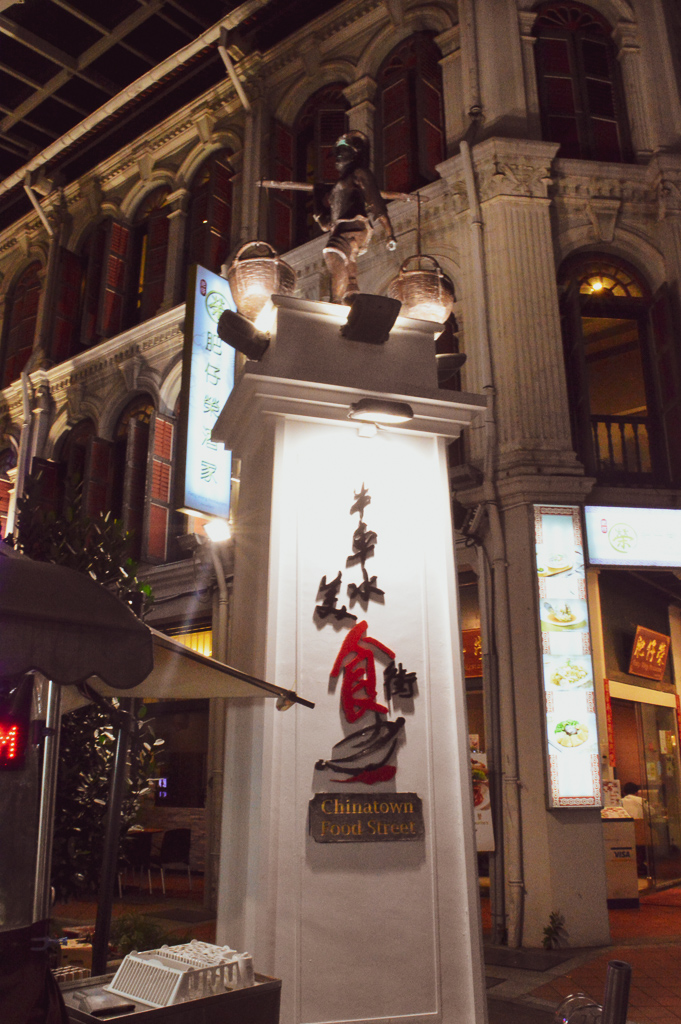

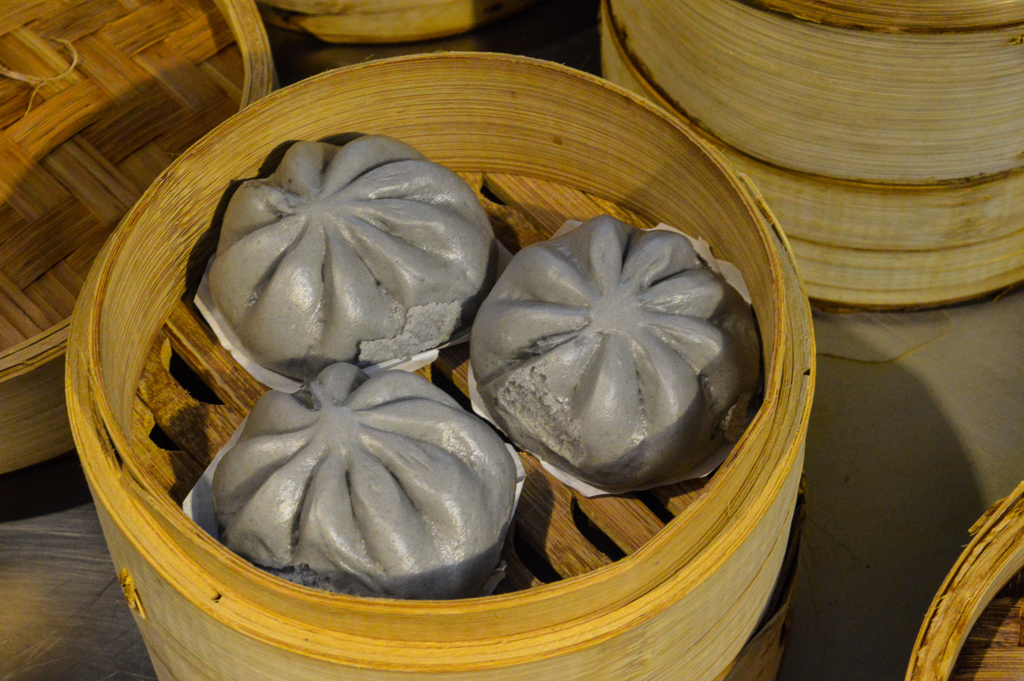


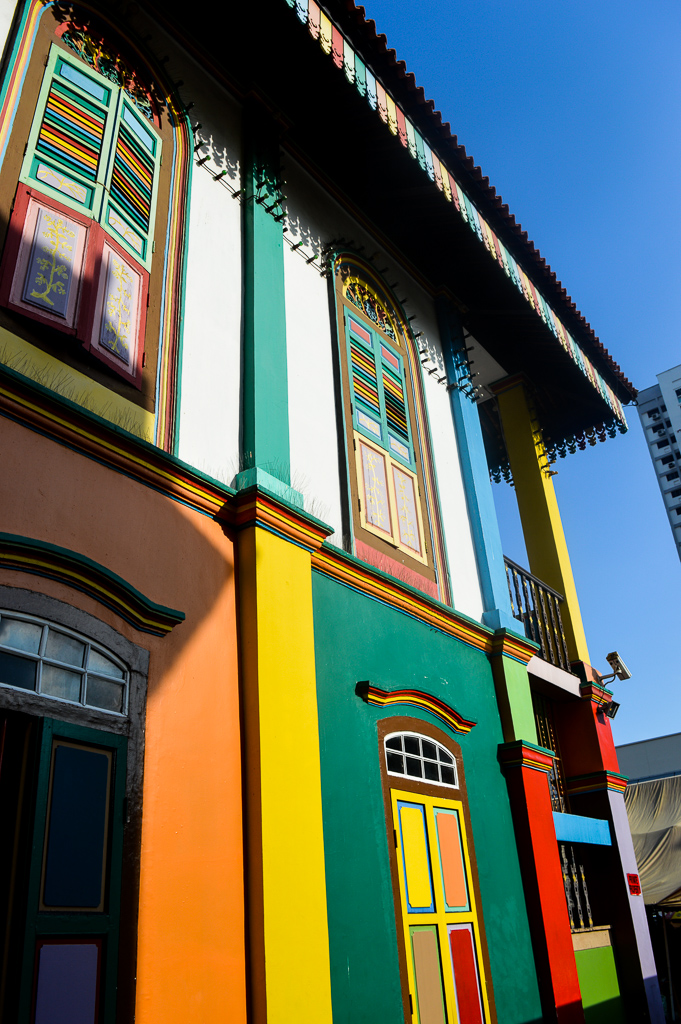
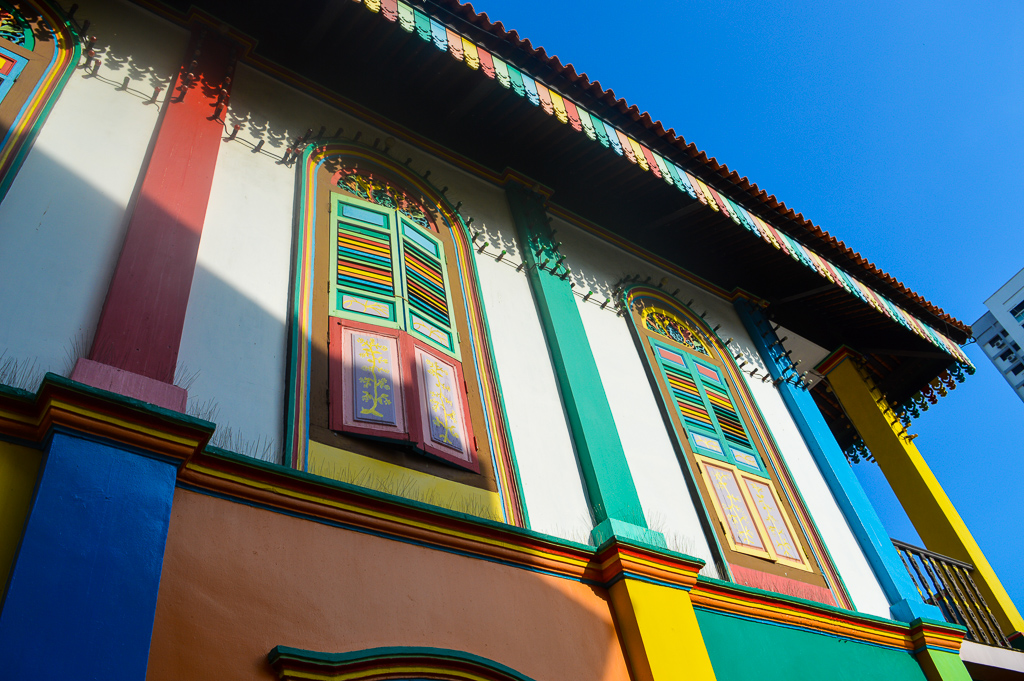
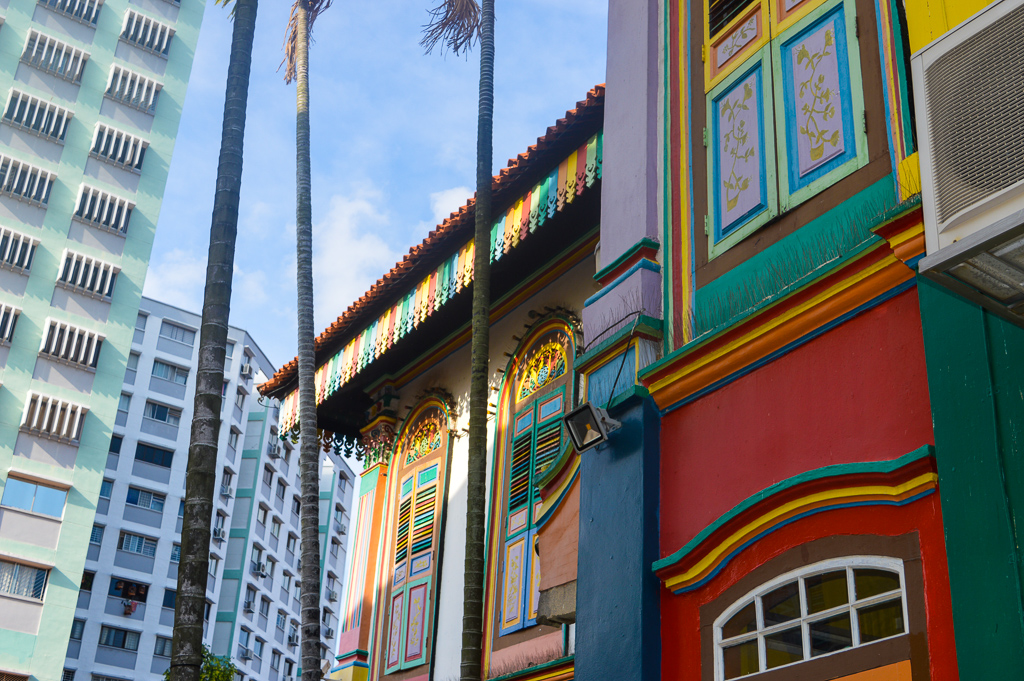


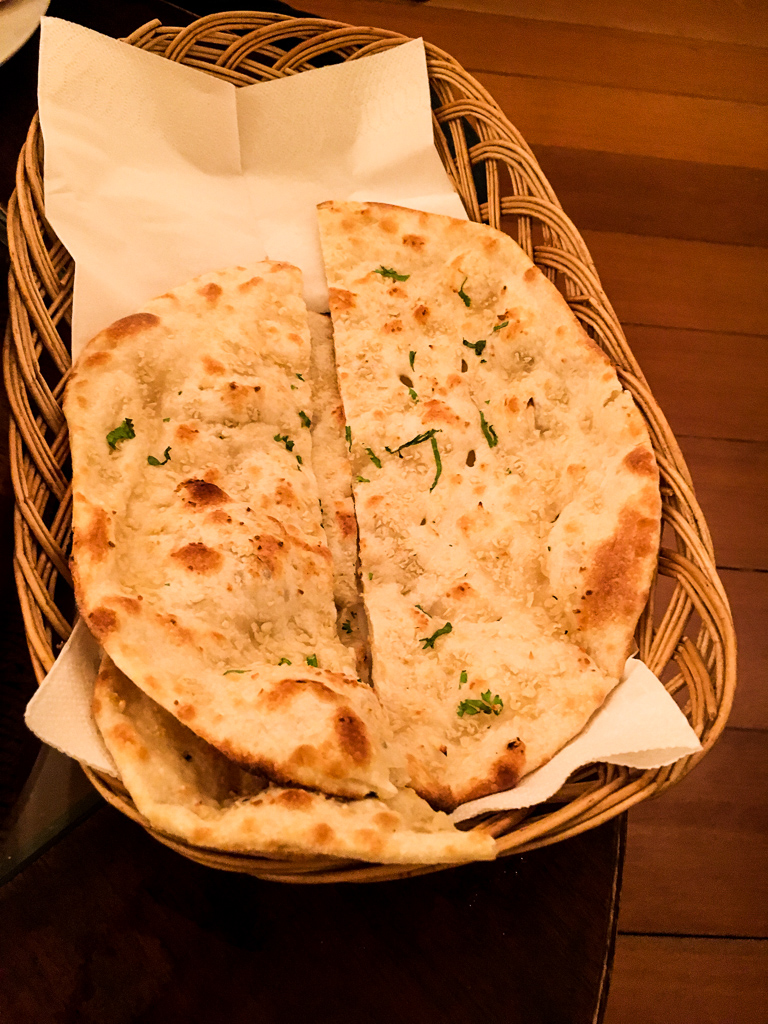

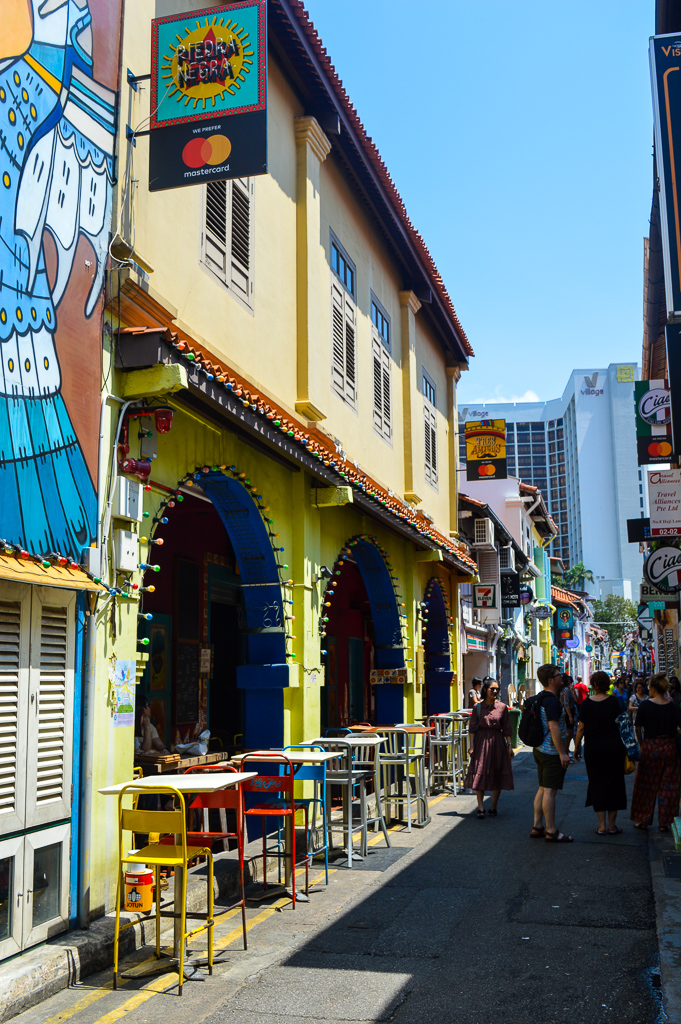
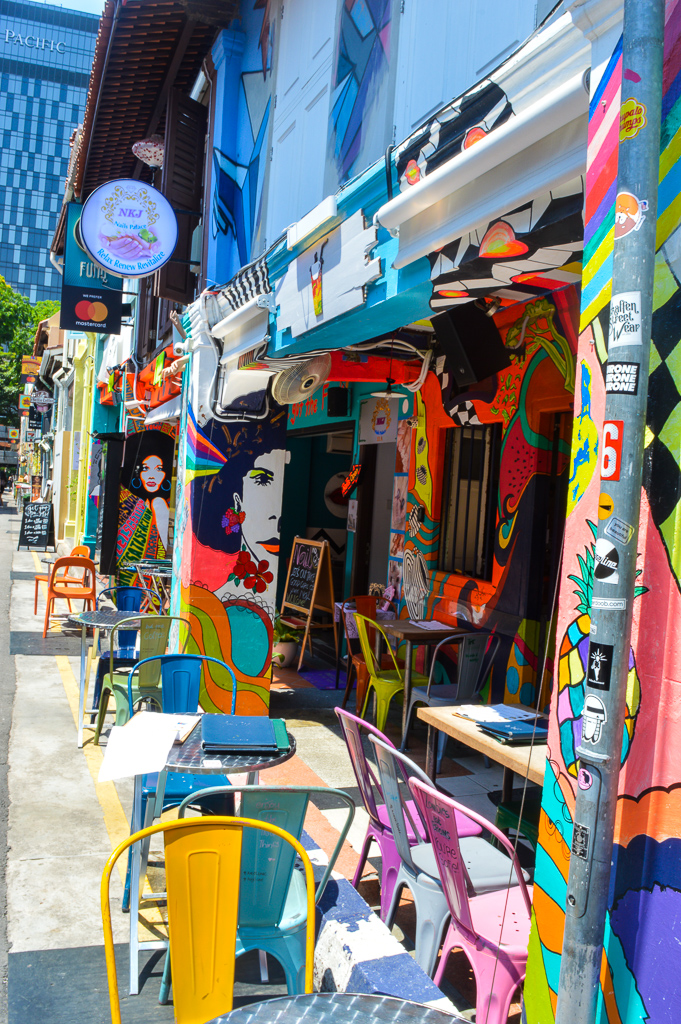
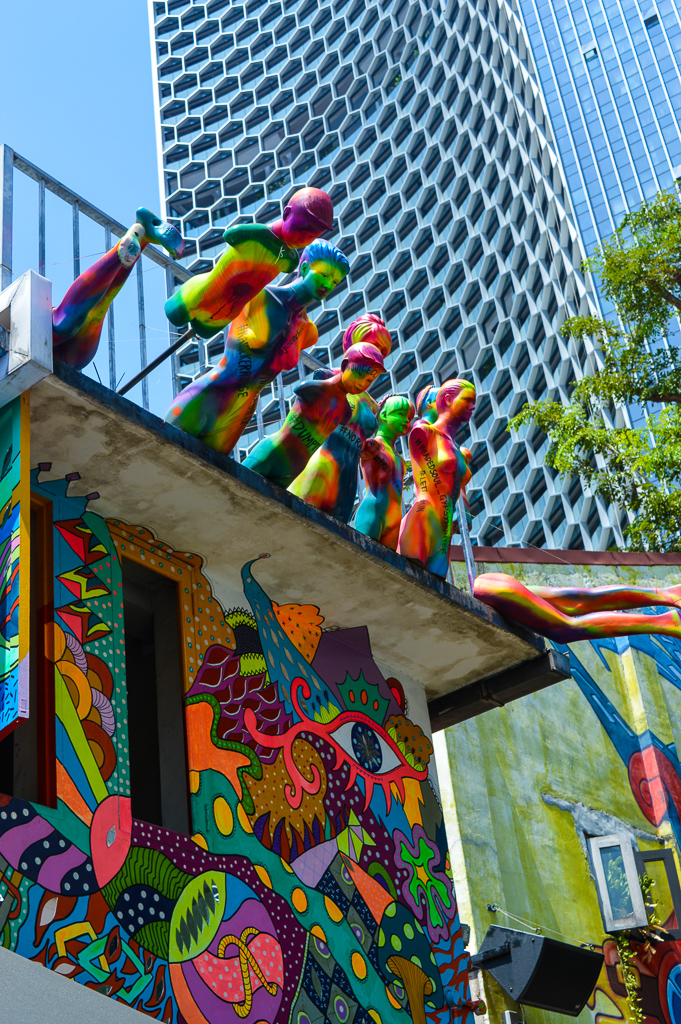
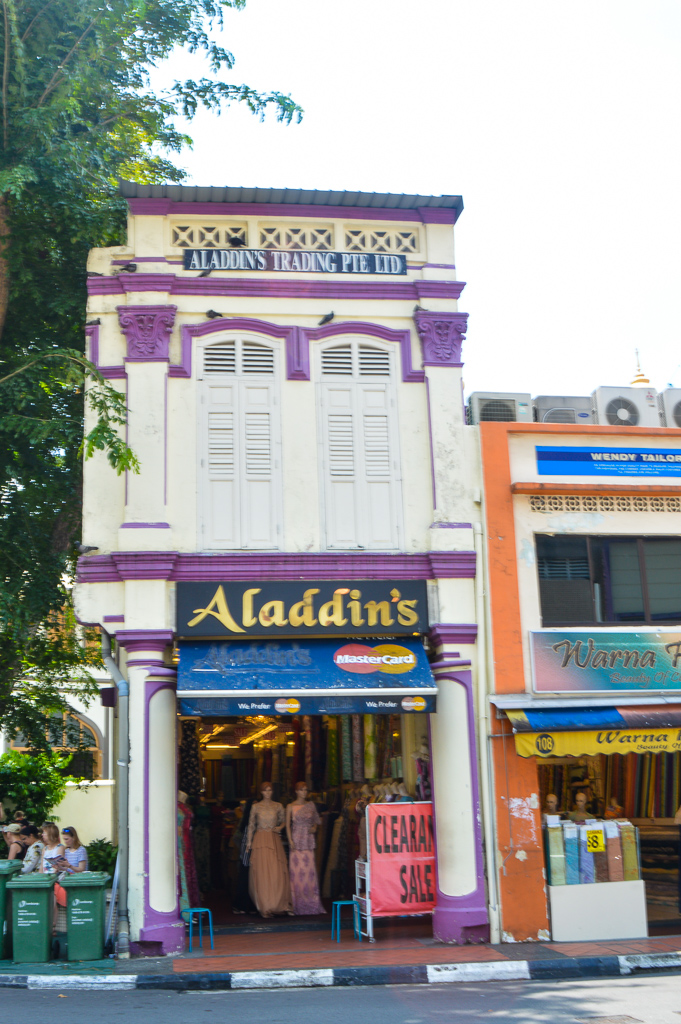
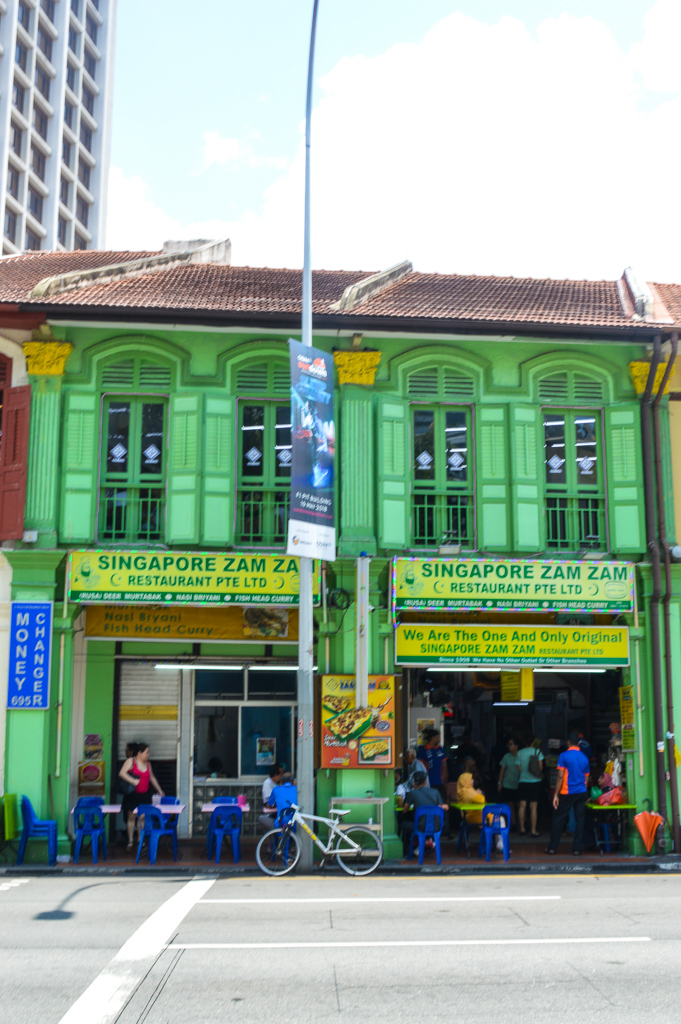
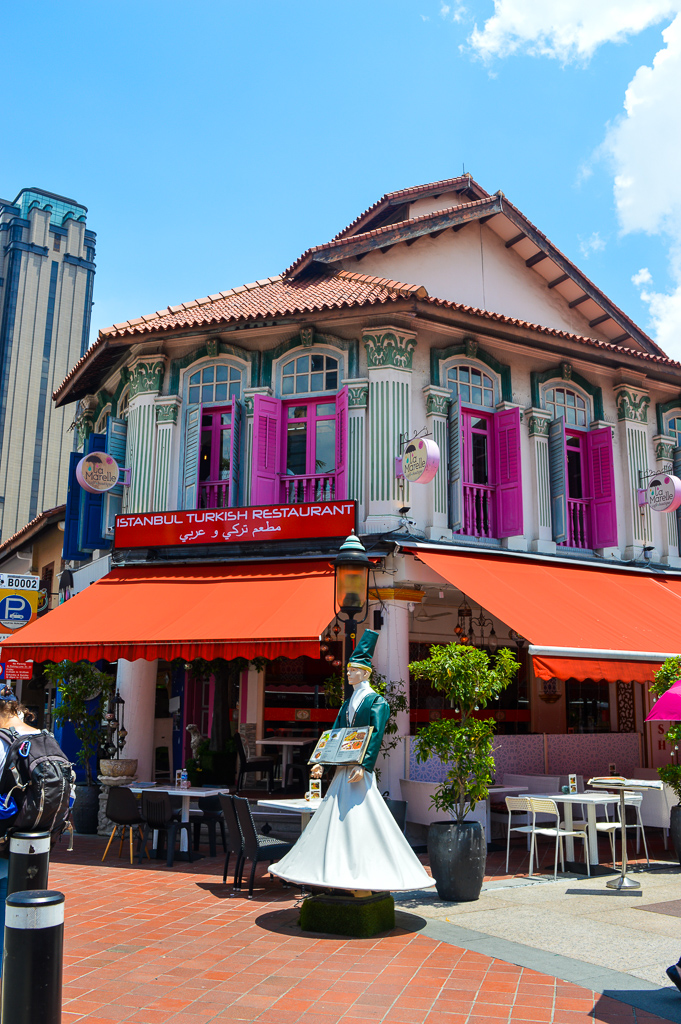
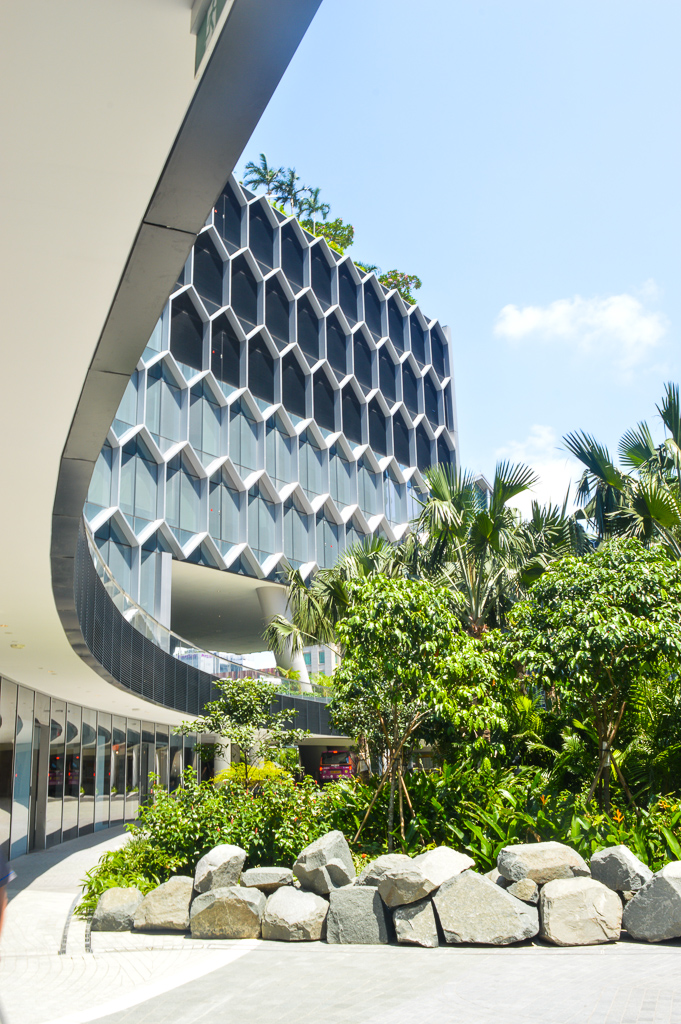
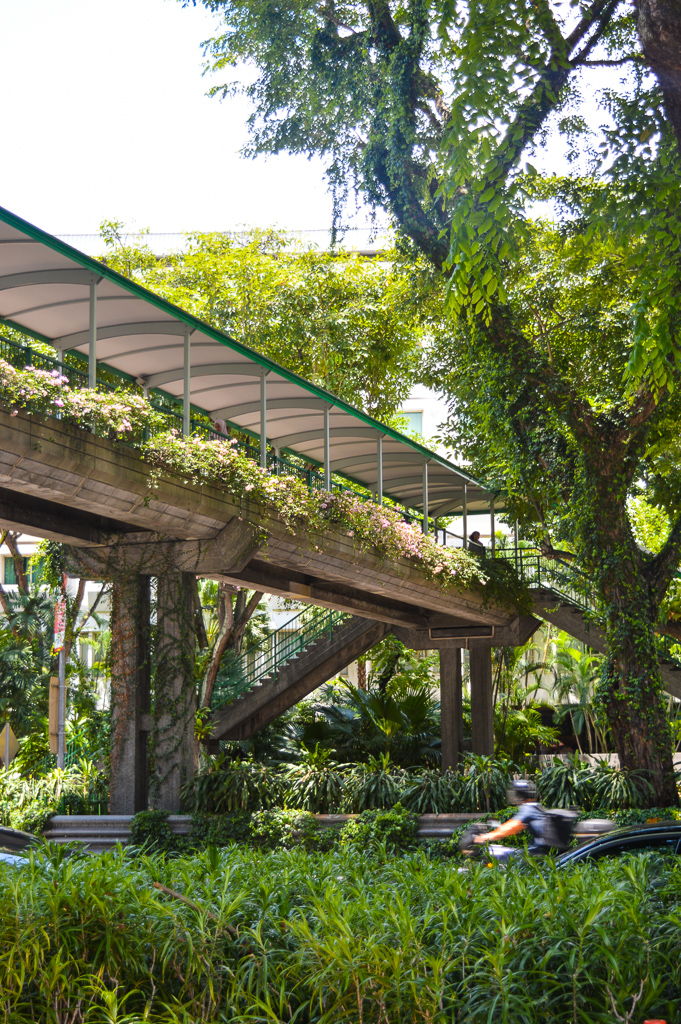
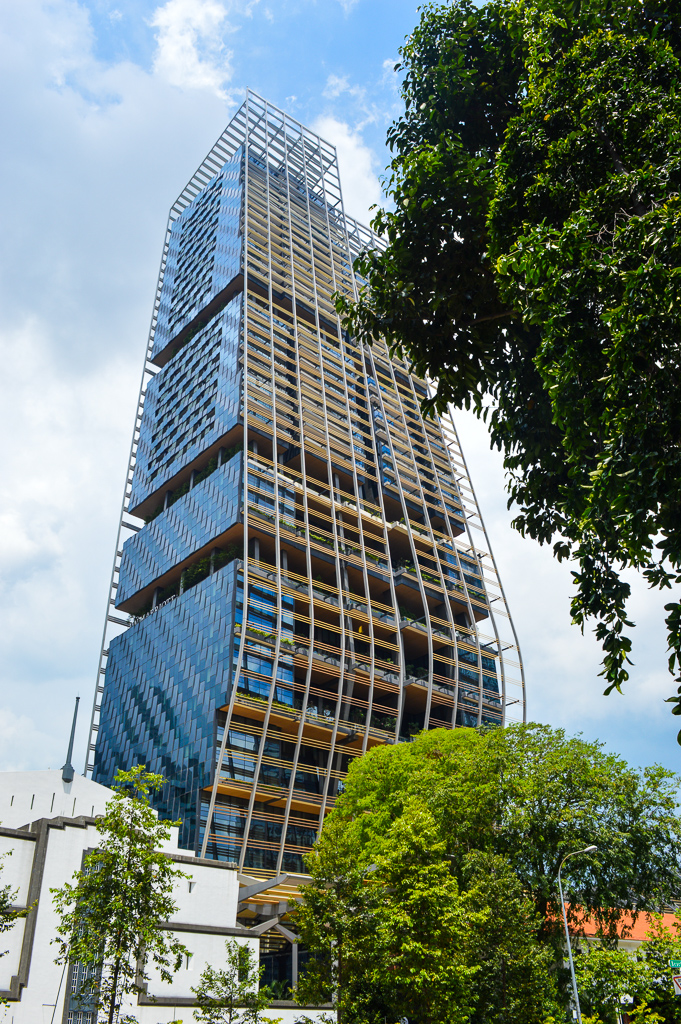
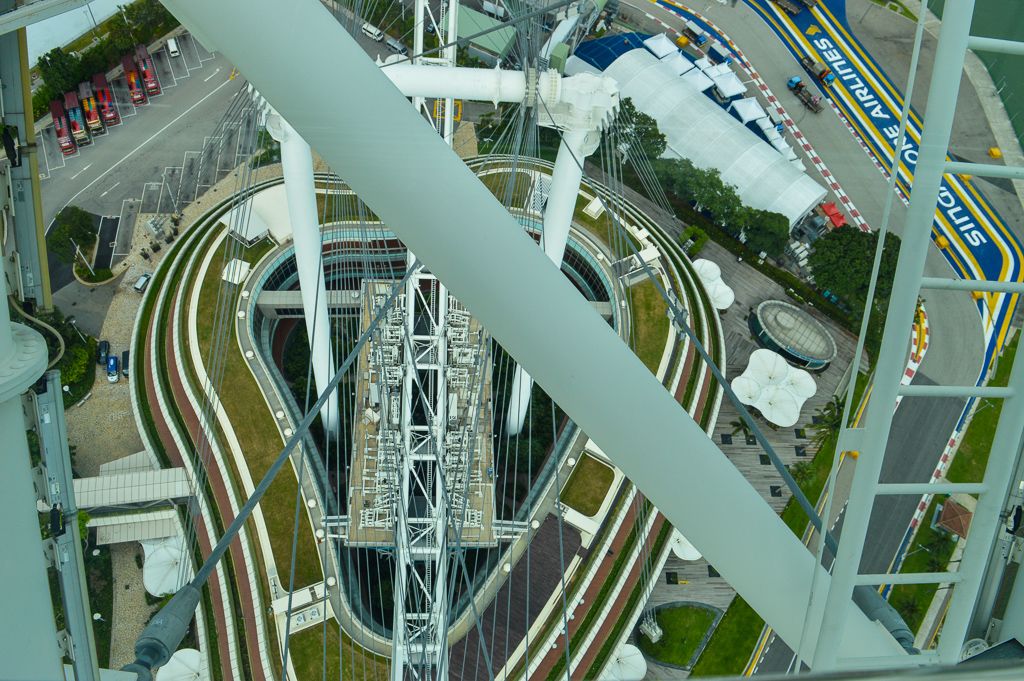
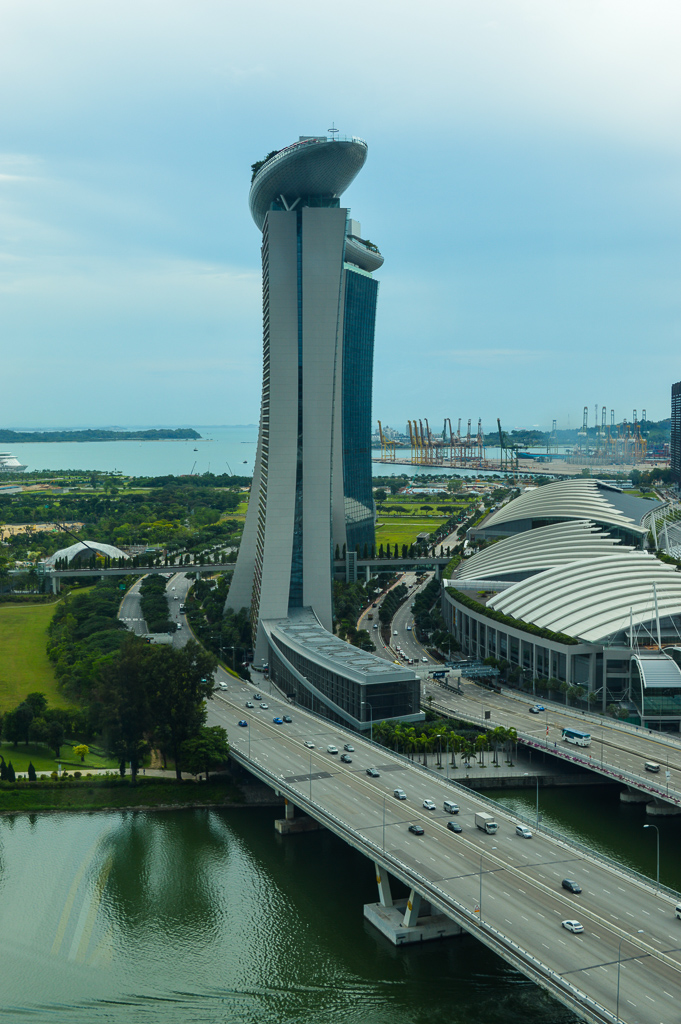
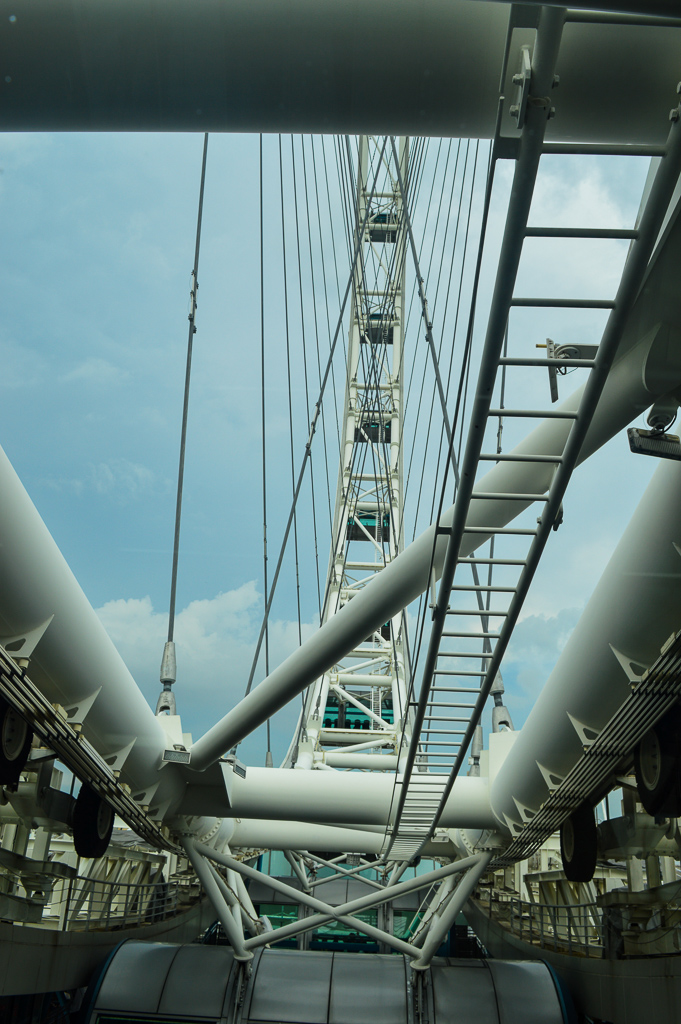
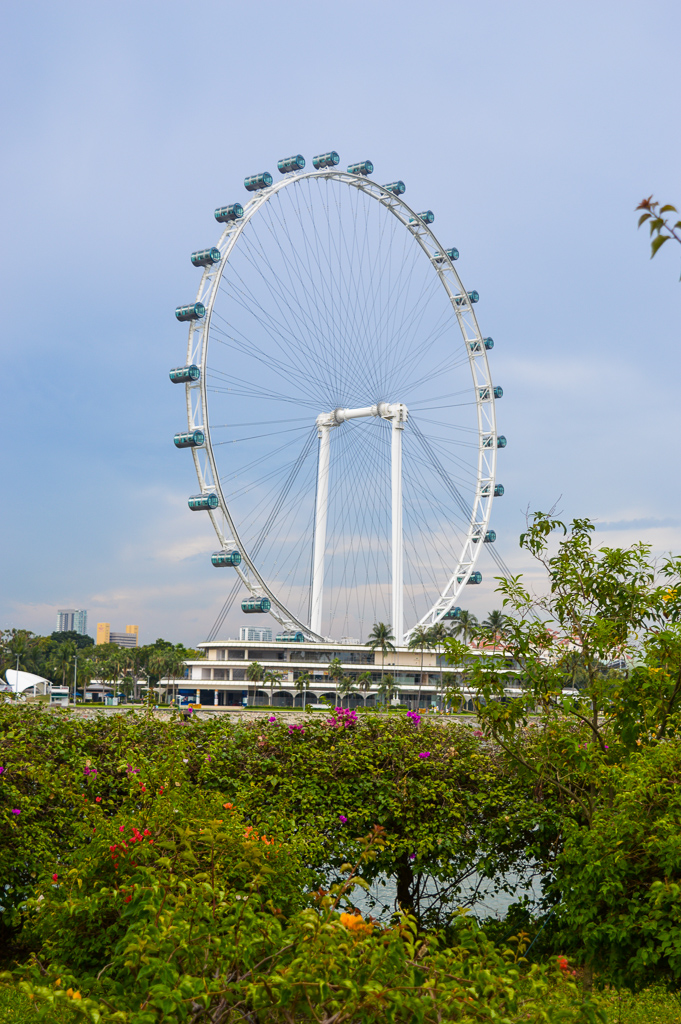
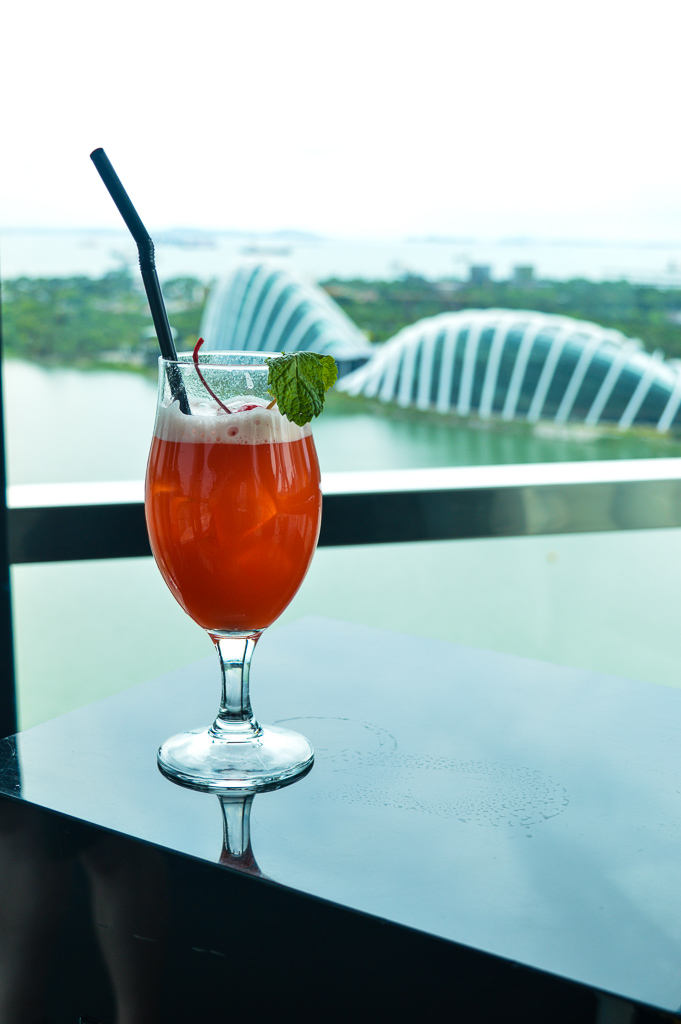
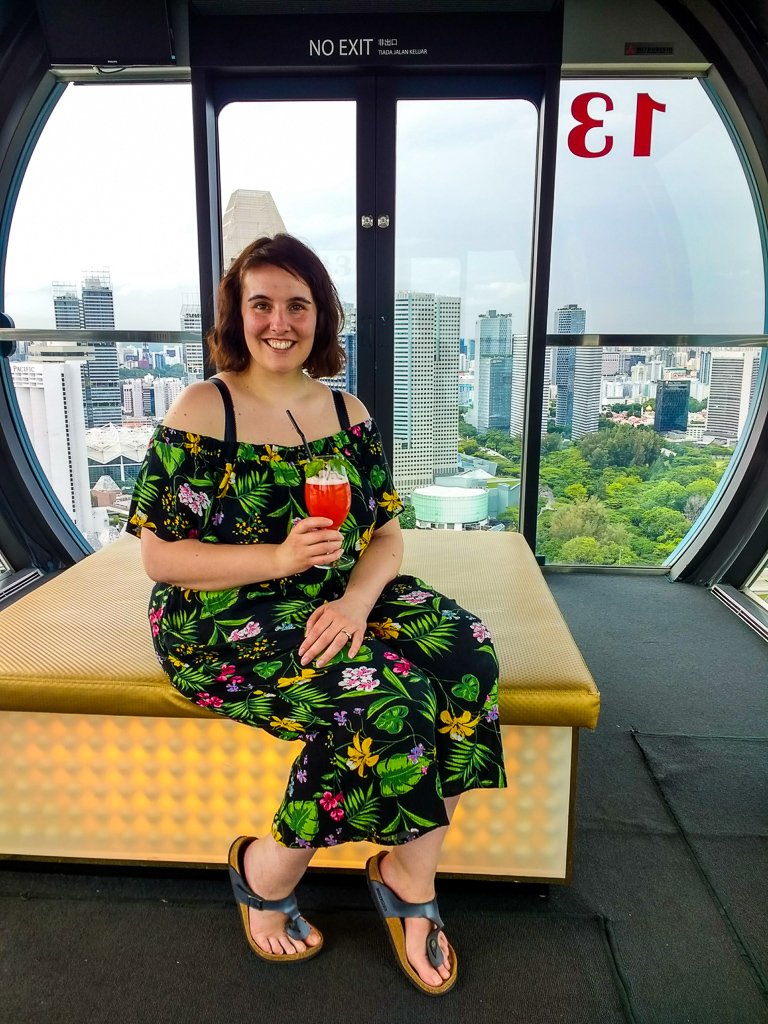
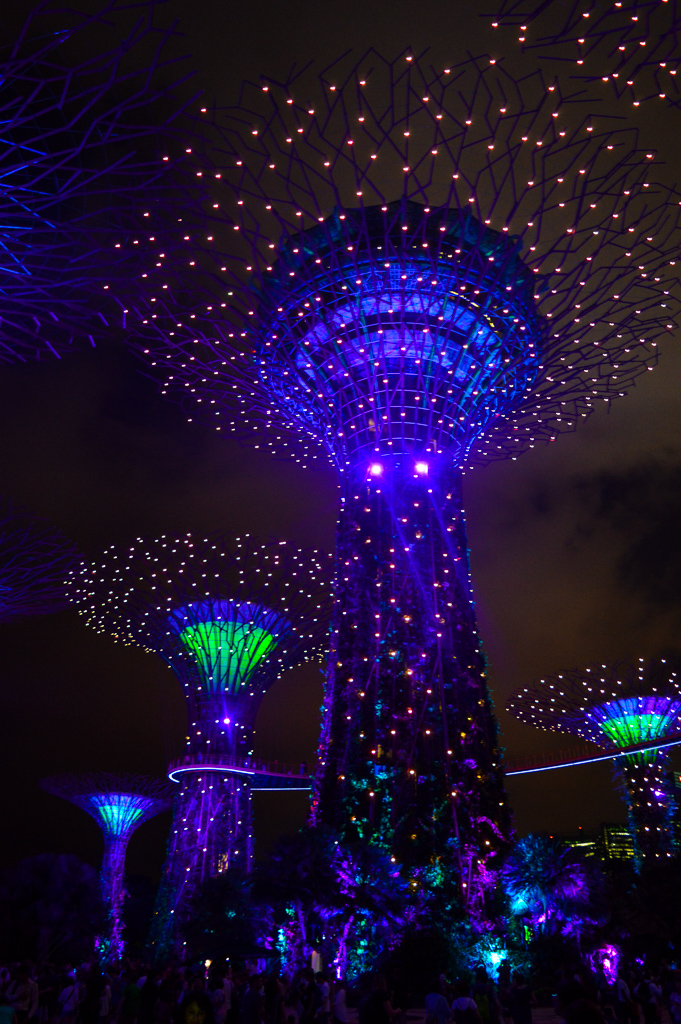
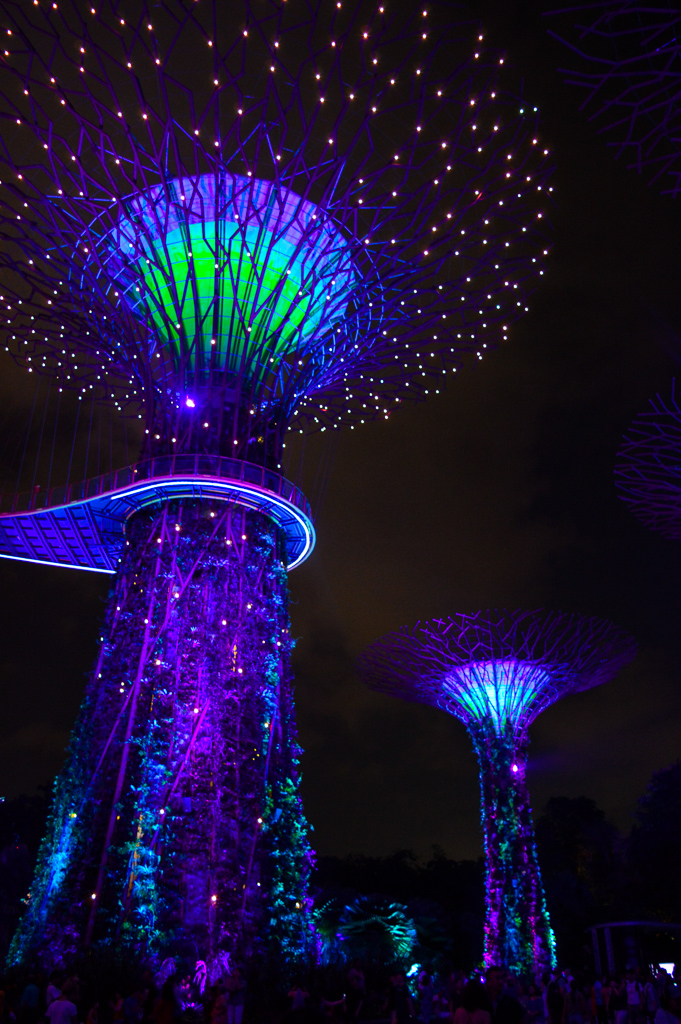
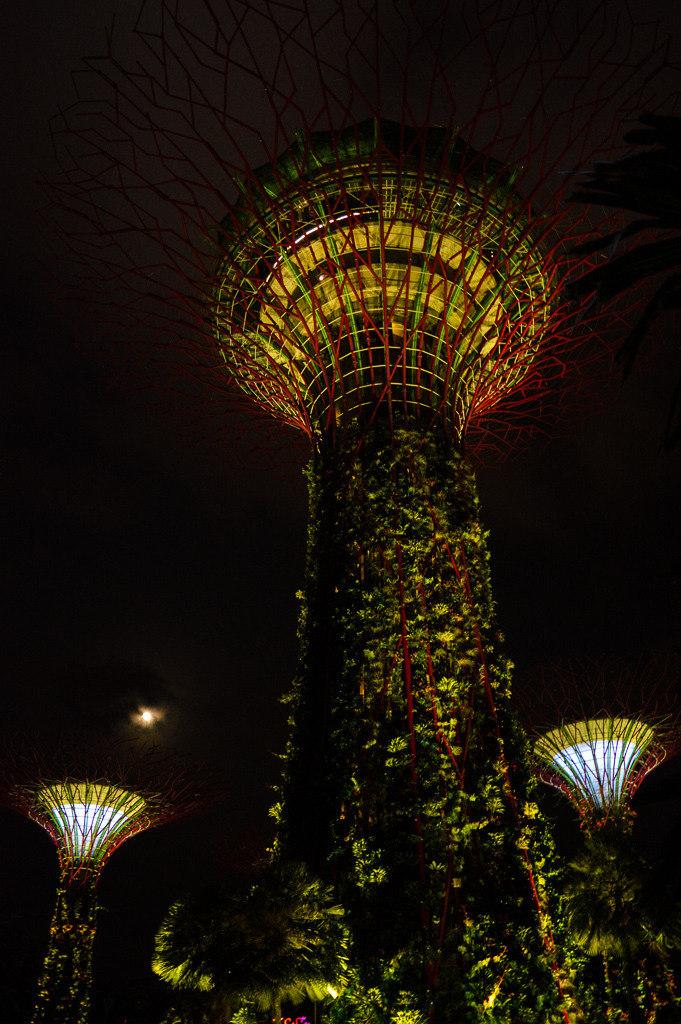
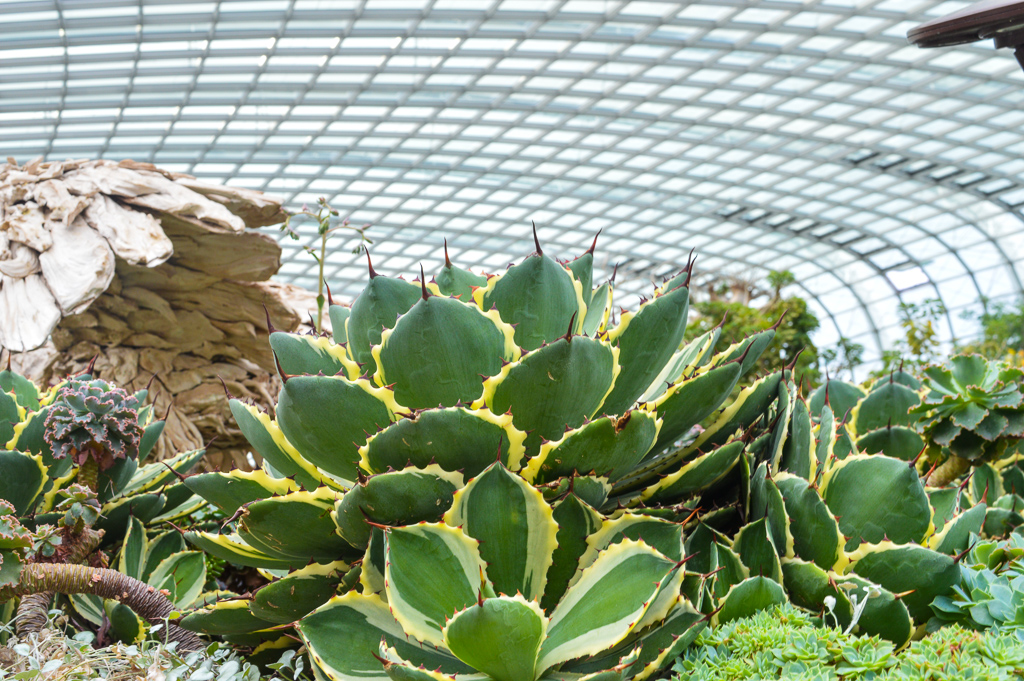
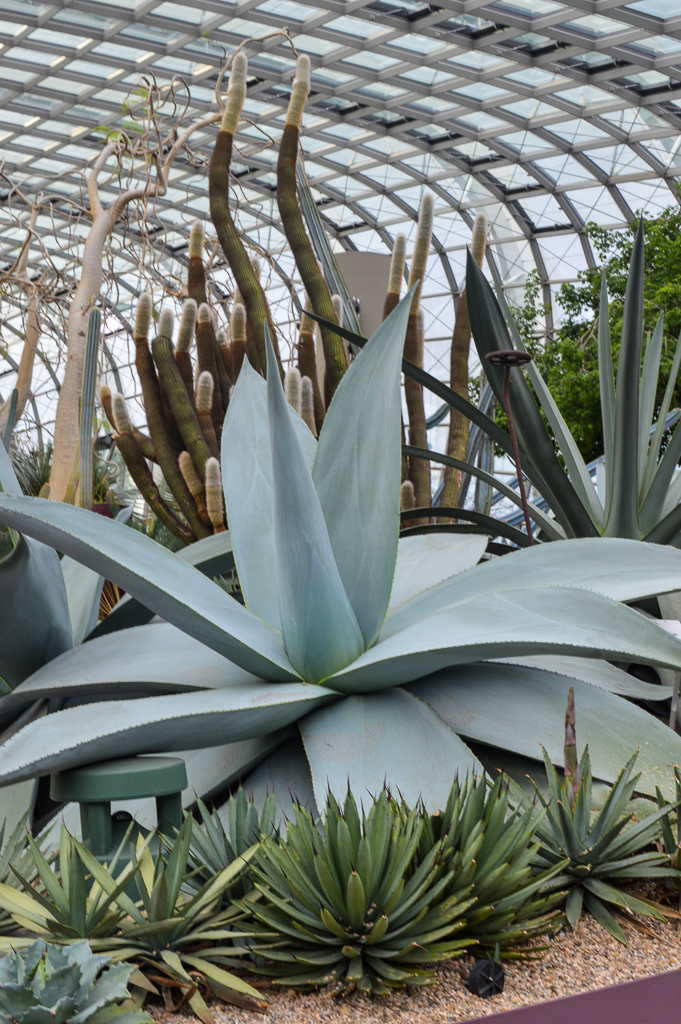
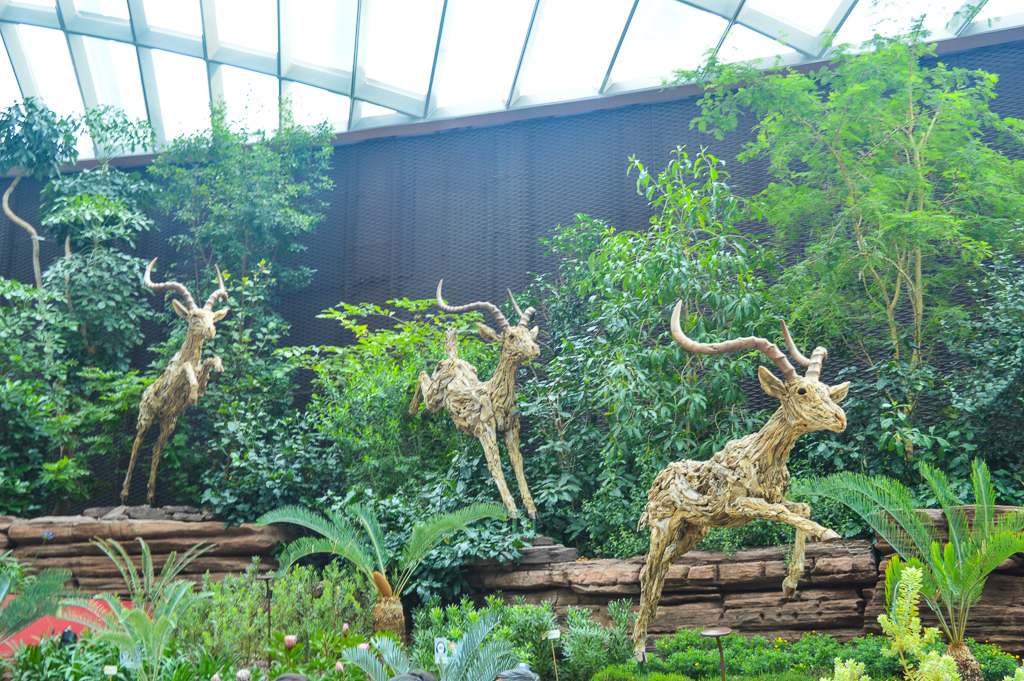
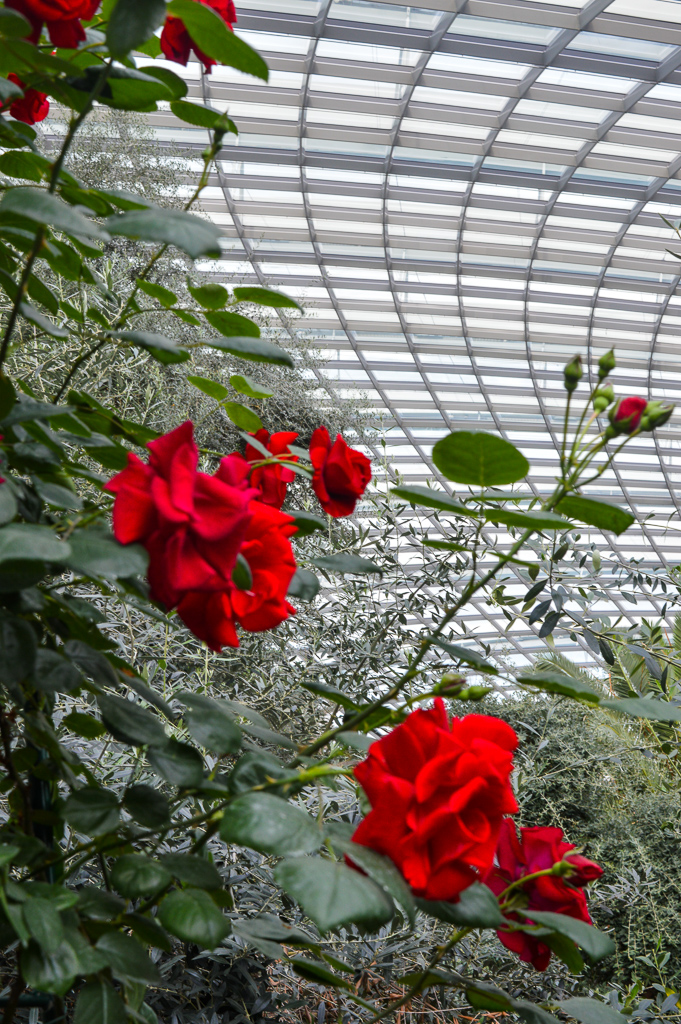
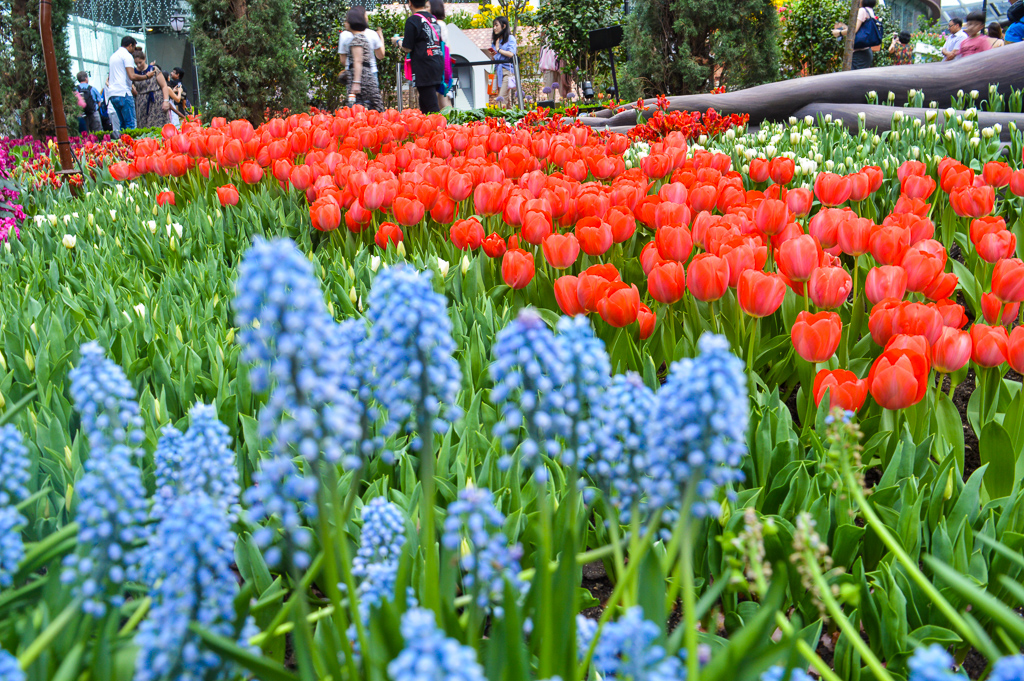
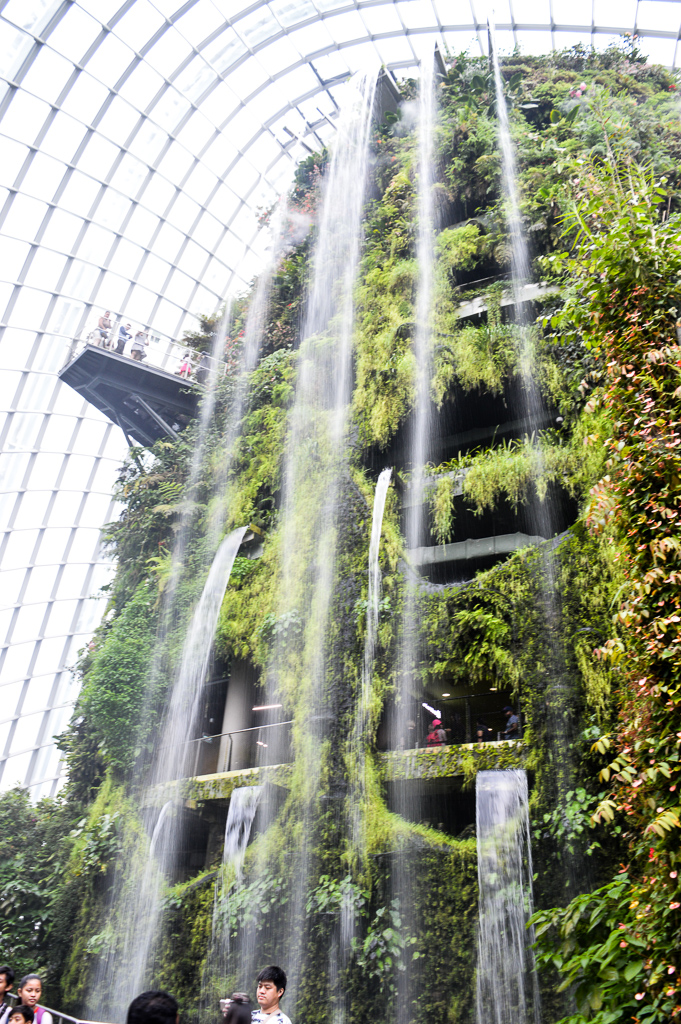
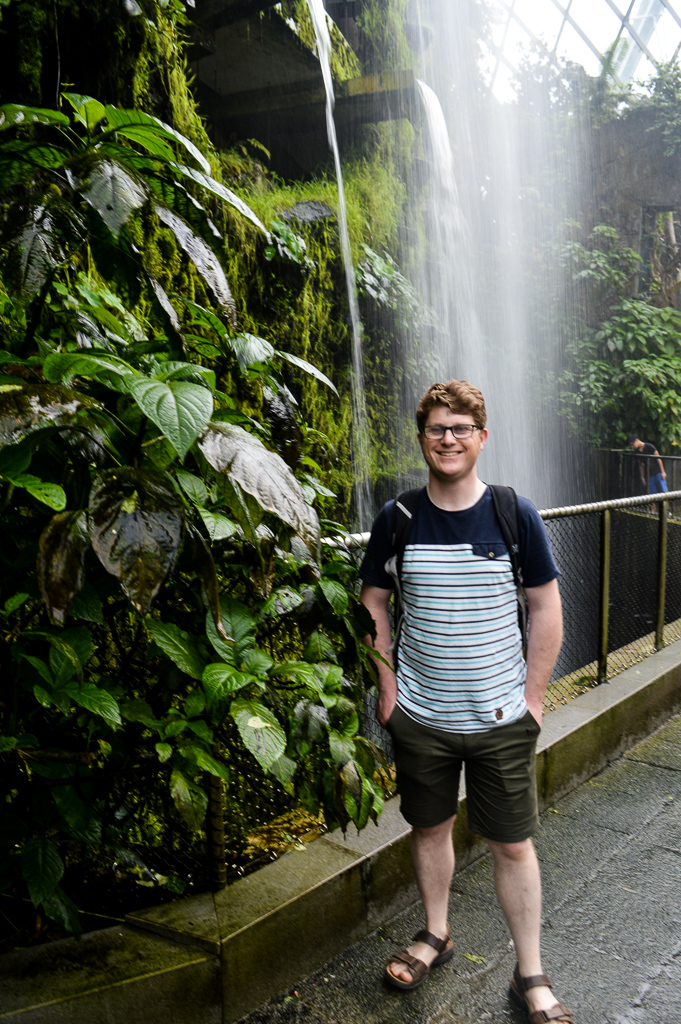
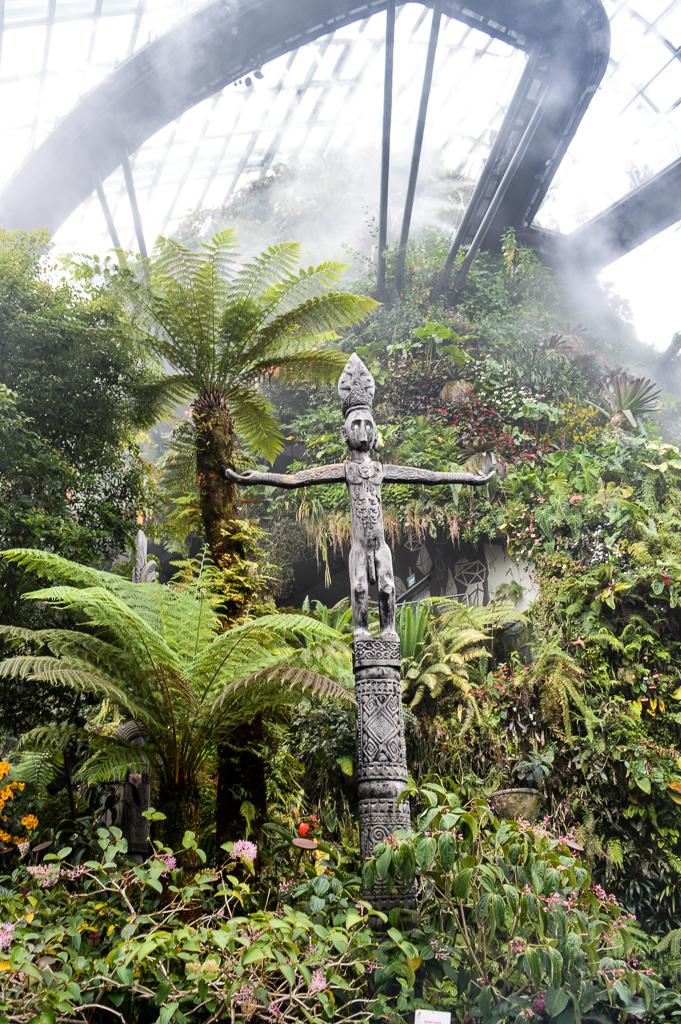
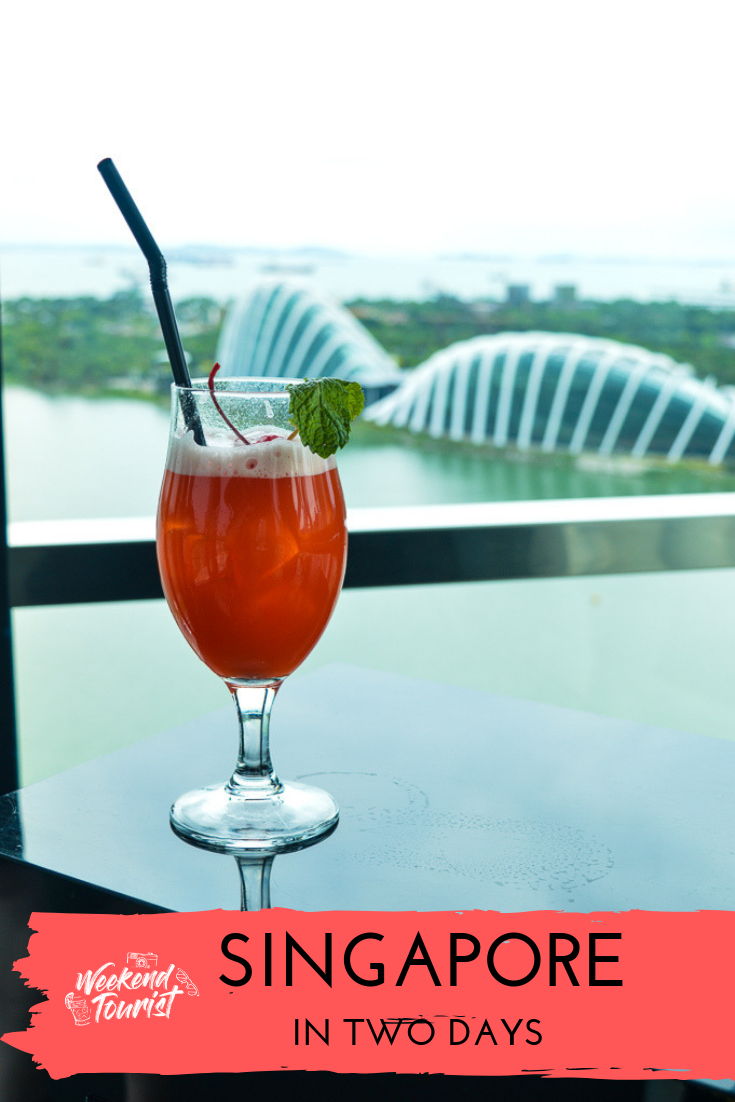
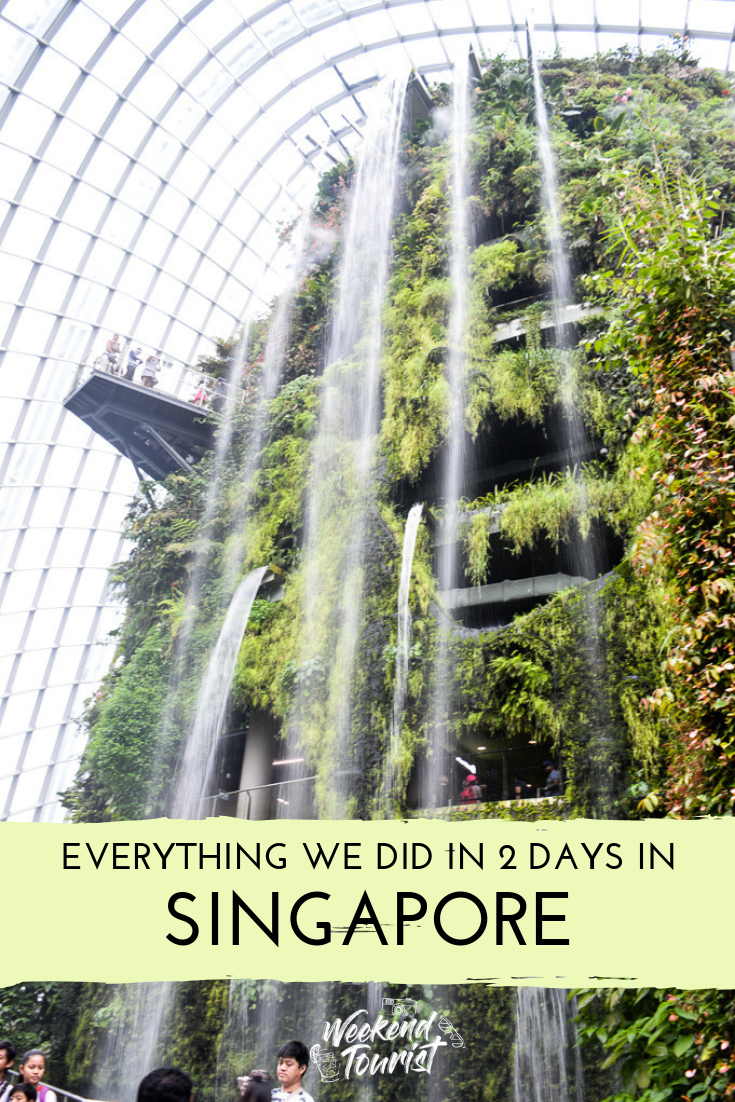
Love all your colourful photos. It really does look fabulous. I hope I get to see it all for myself one day.
Great post, Jess! I saw many of the same things you did in Singapore a few years ago and it’s an incredible mix of cultures for such a small country. A few of the places you mentioned here I never saw so hopefully another time.
Singapore always looks like such a vibrant and fascinating place to visit. I love botanic gardens, so a trip to the Flower Domes would be a must for me, and the murtabarak look very tasty!
I completed study from Coleman College in 2018. I livied in Chinatown. Such a amazing country. I never forget this country and Singaporean frinds wherei worked. I miss them. I love you Singapore friends.